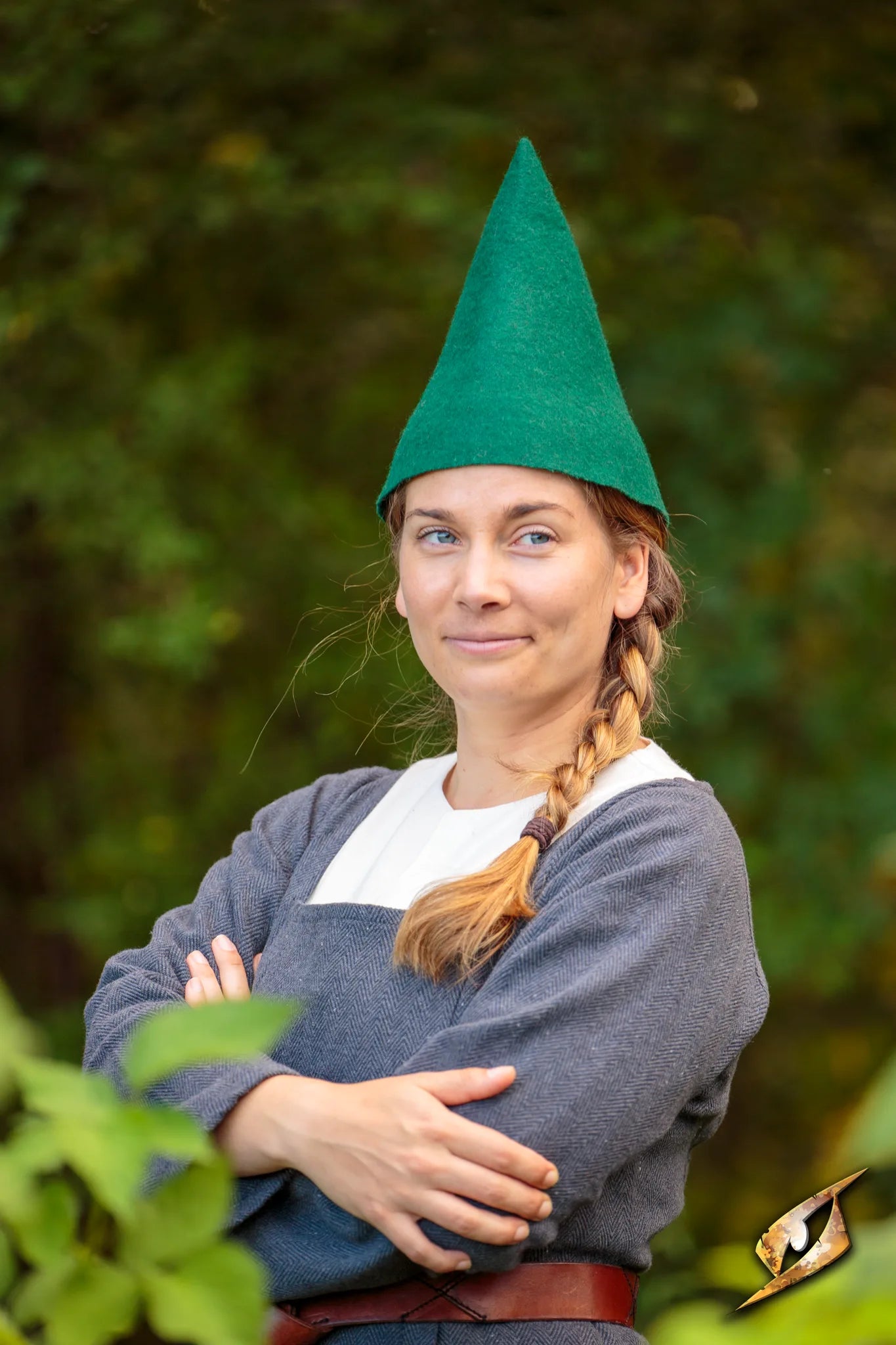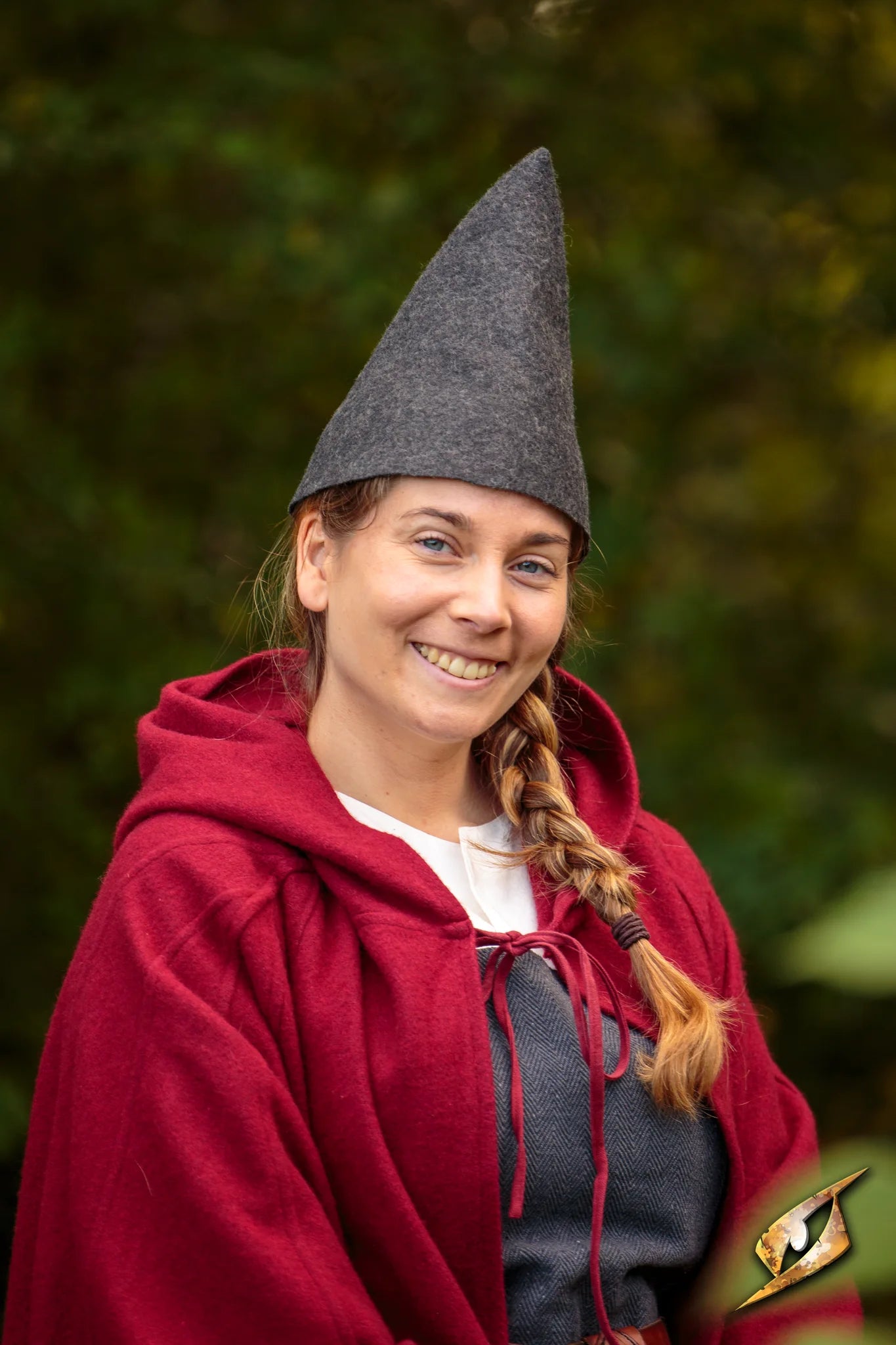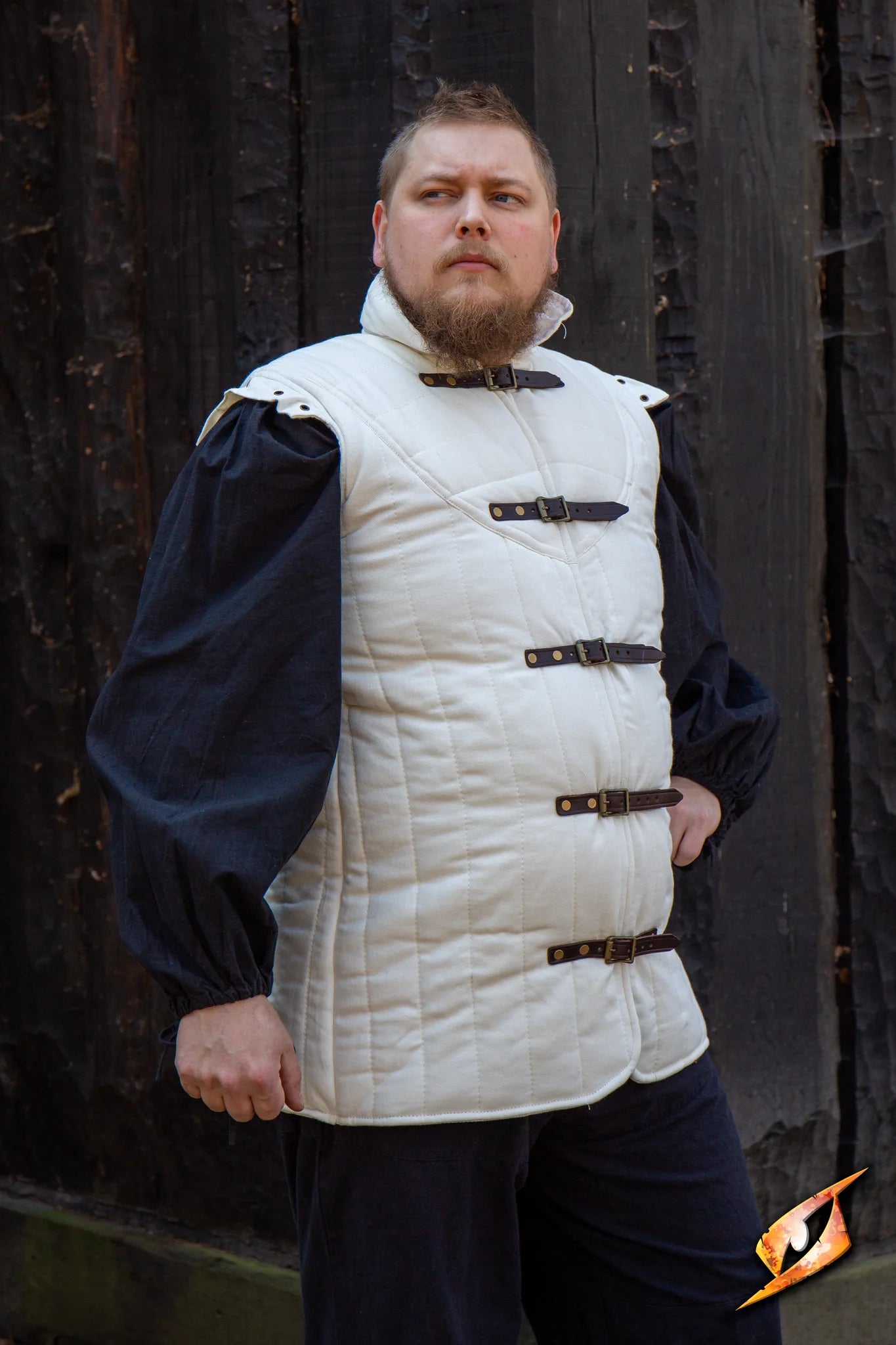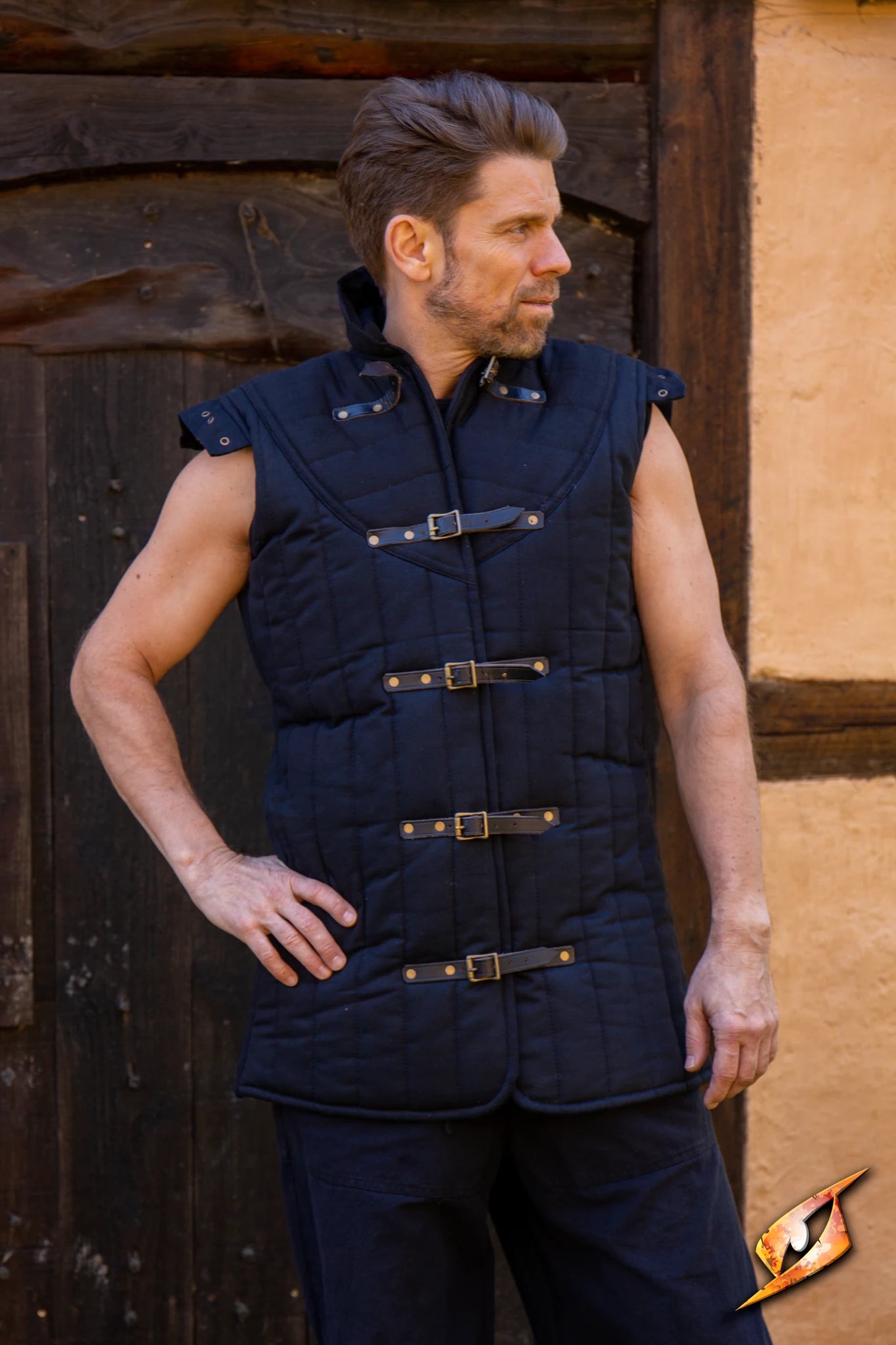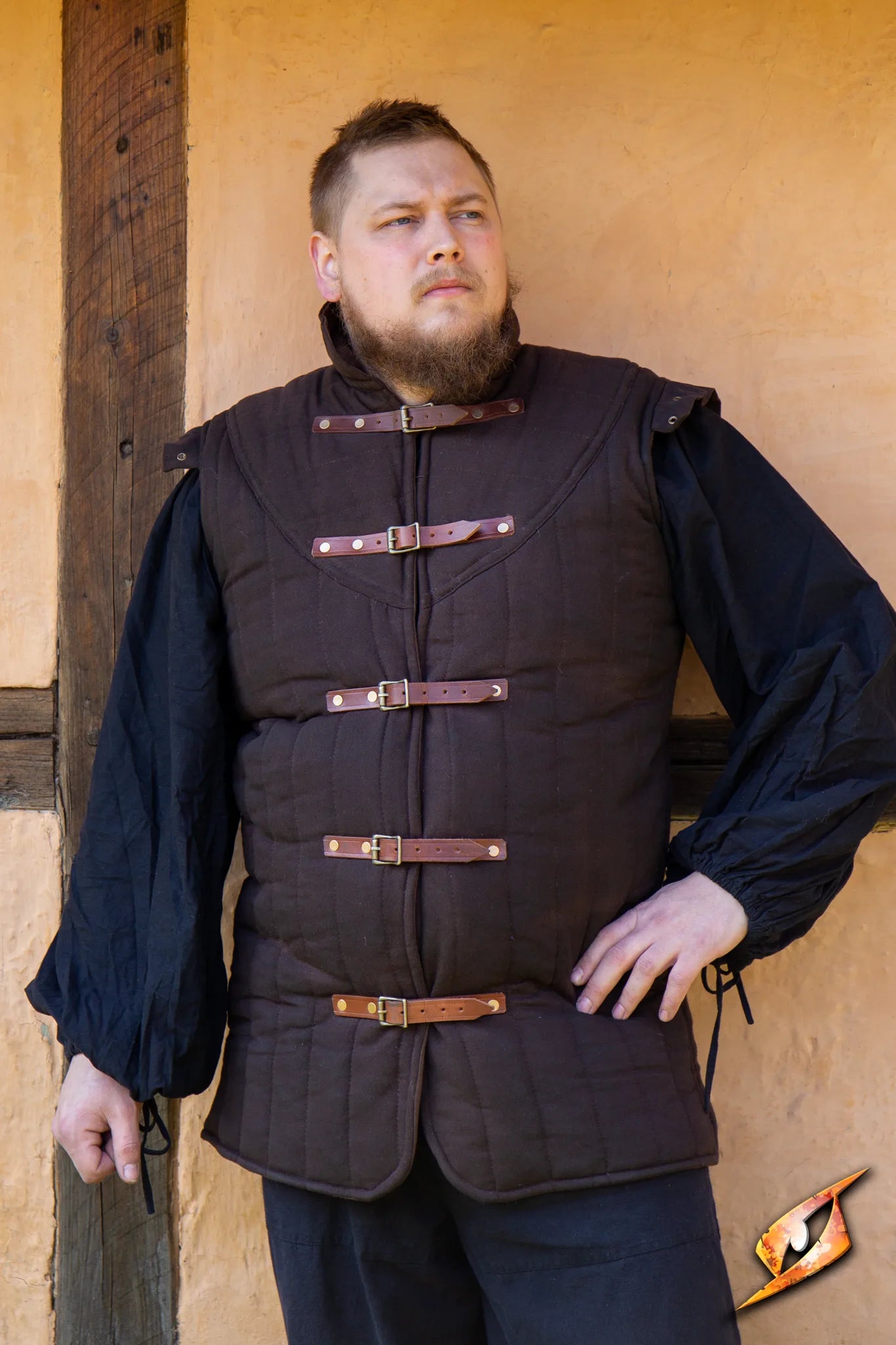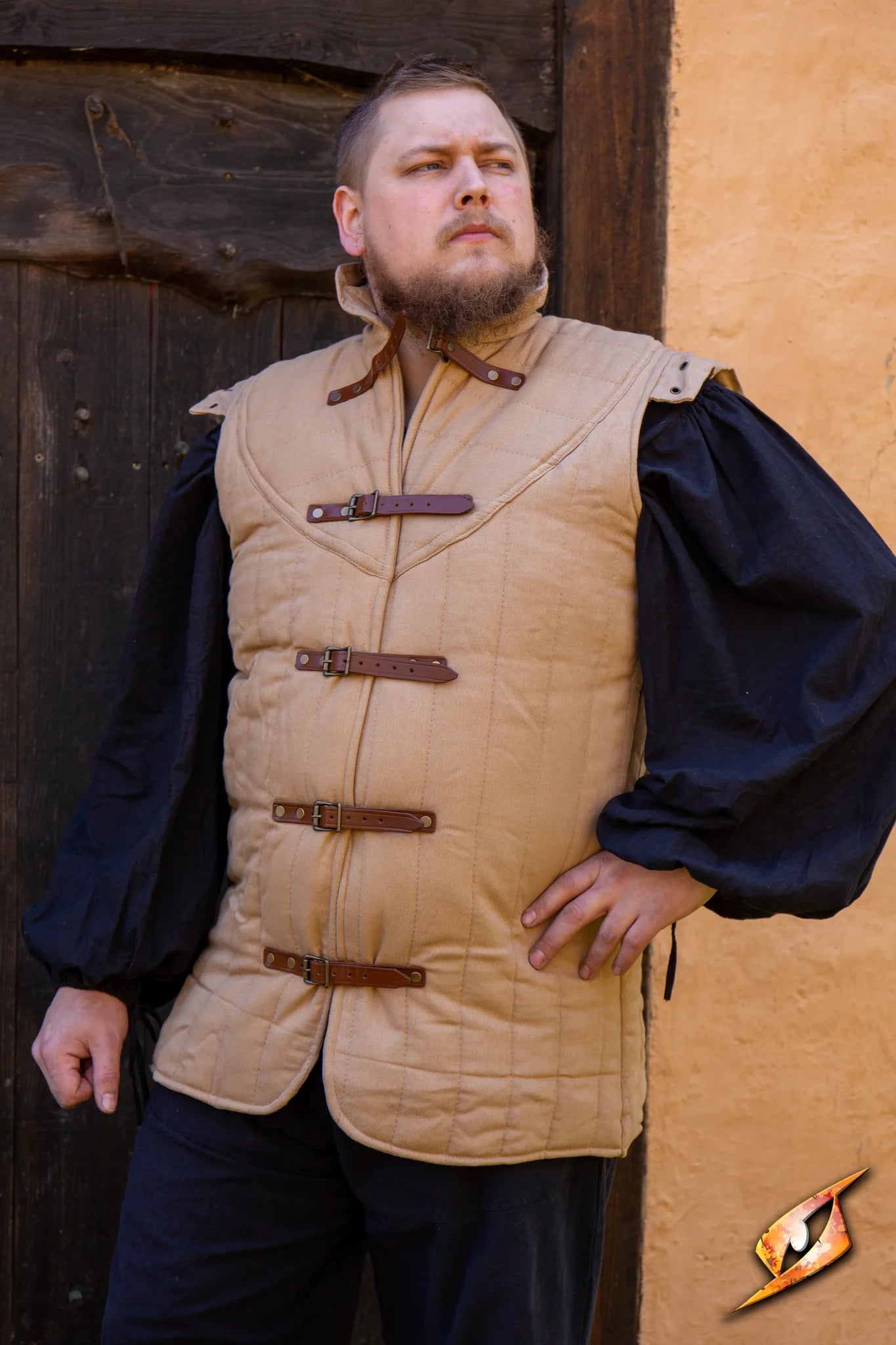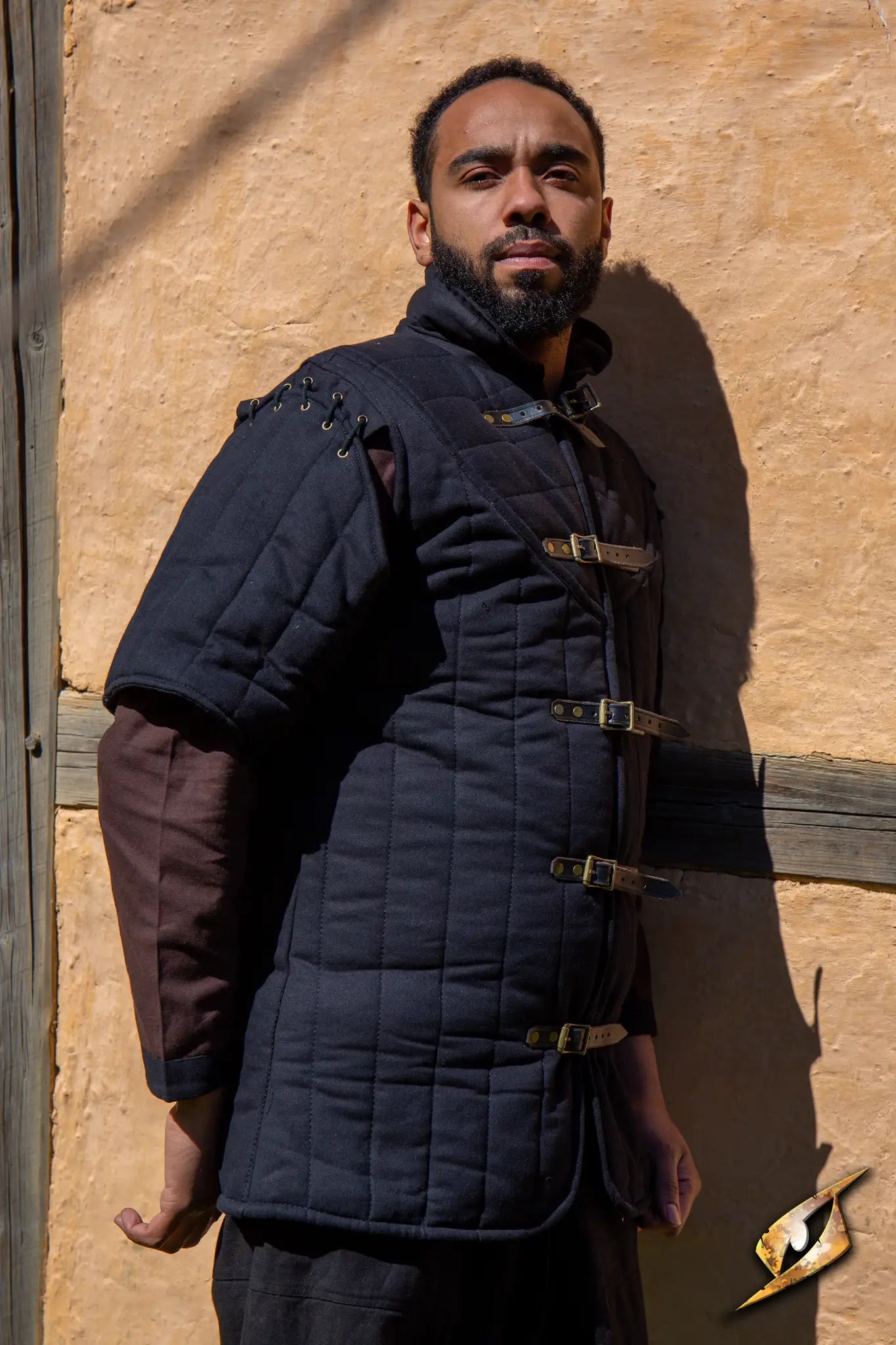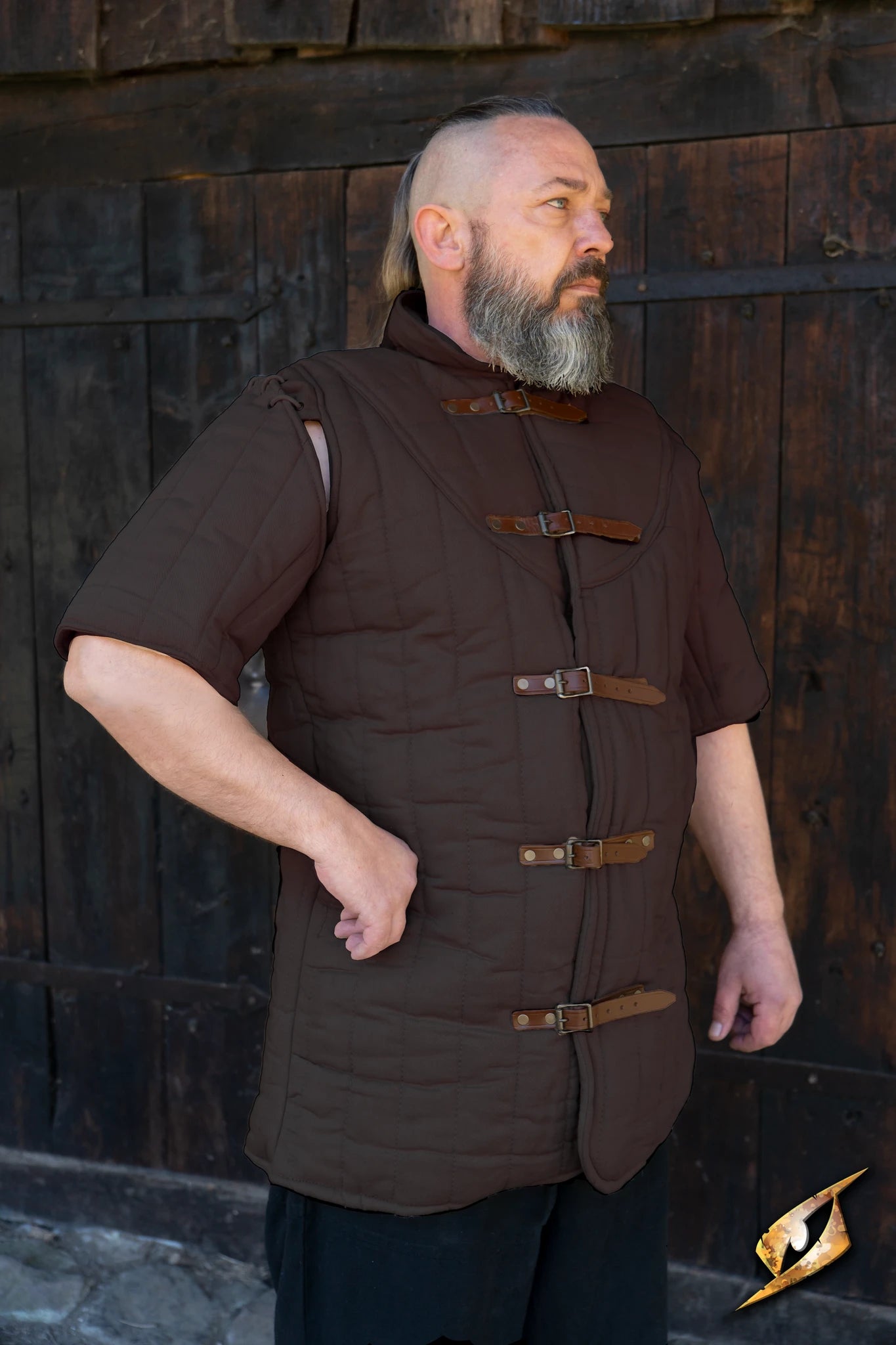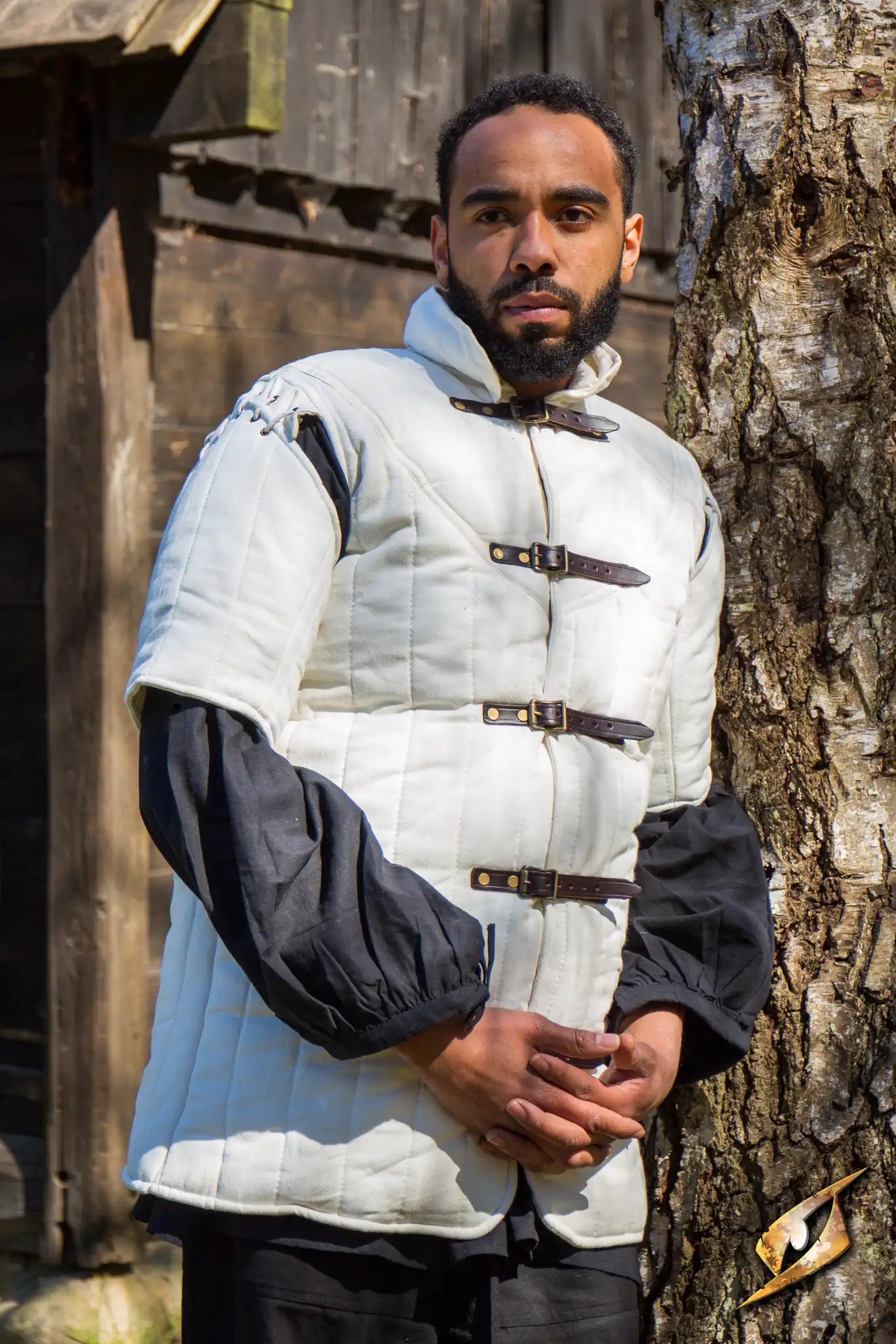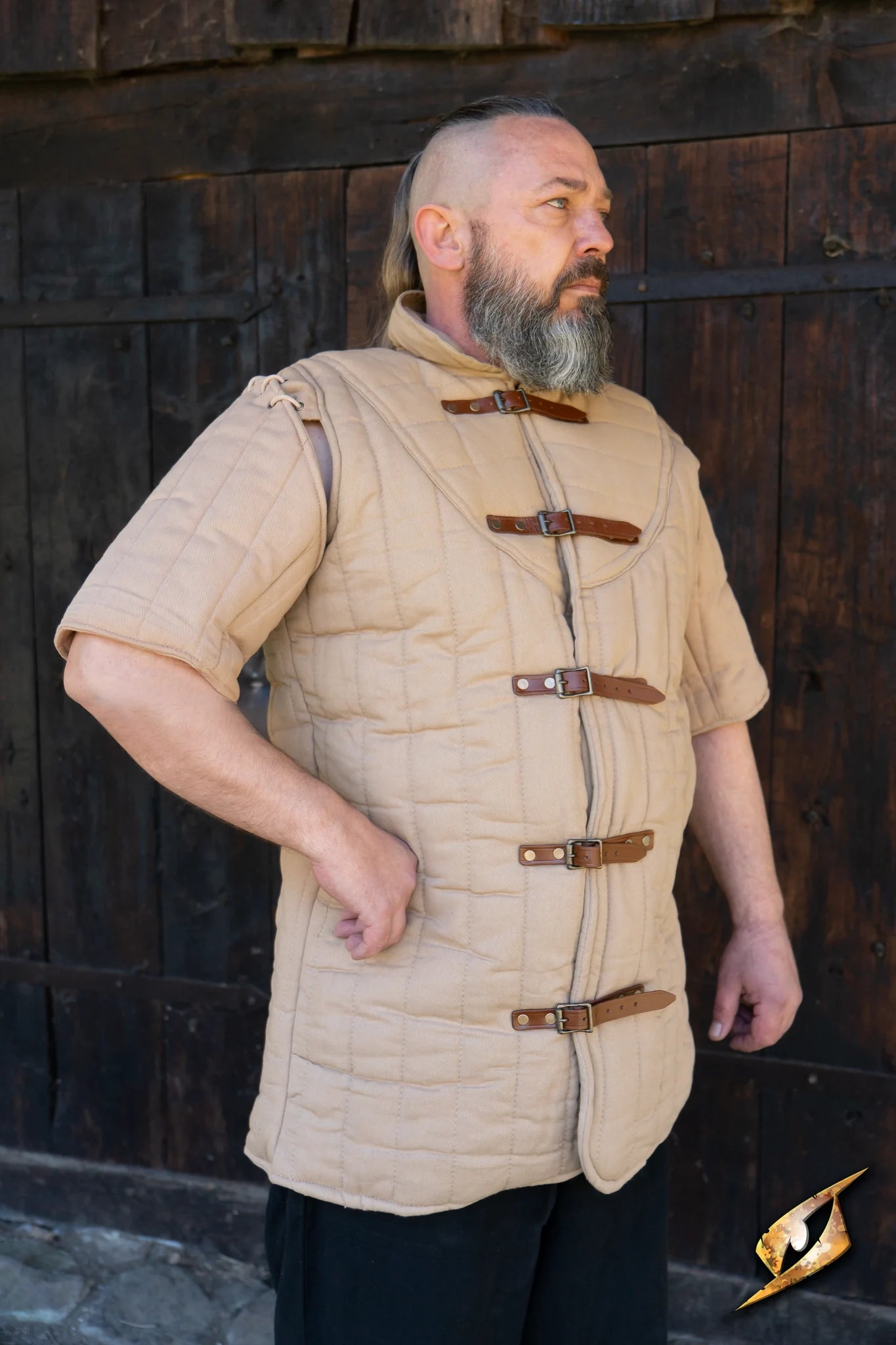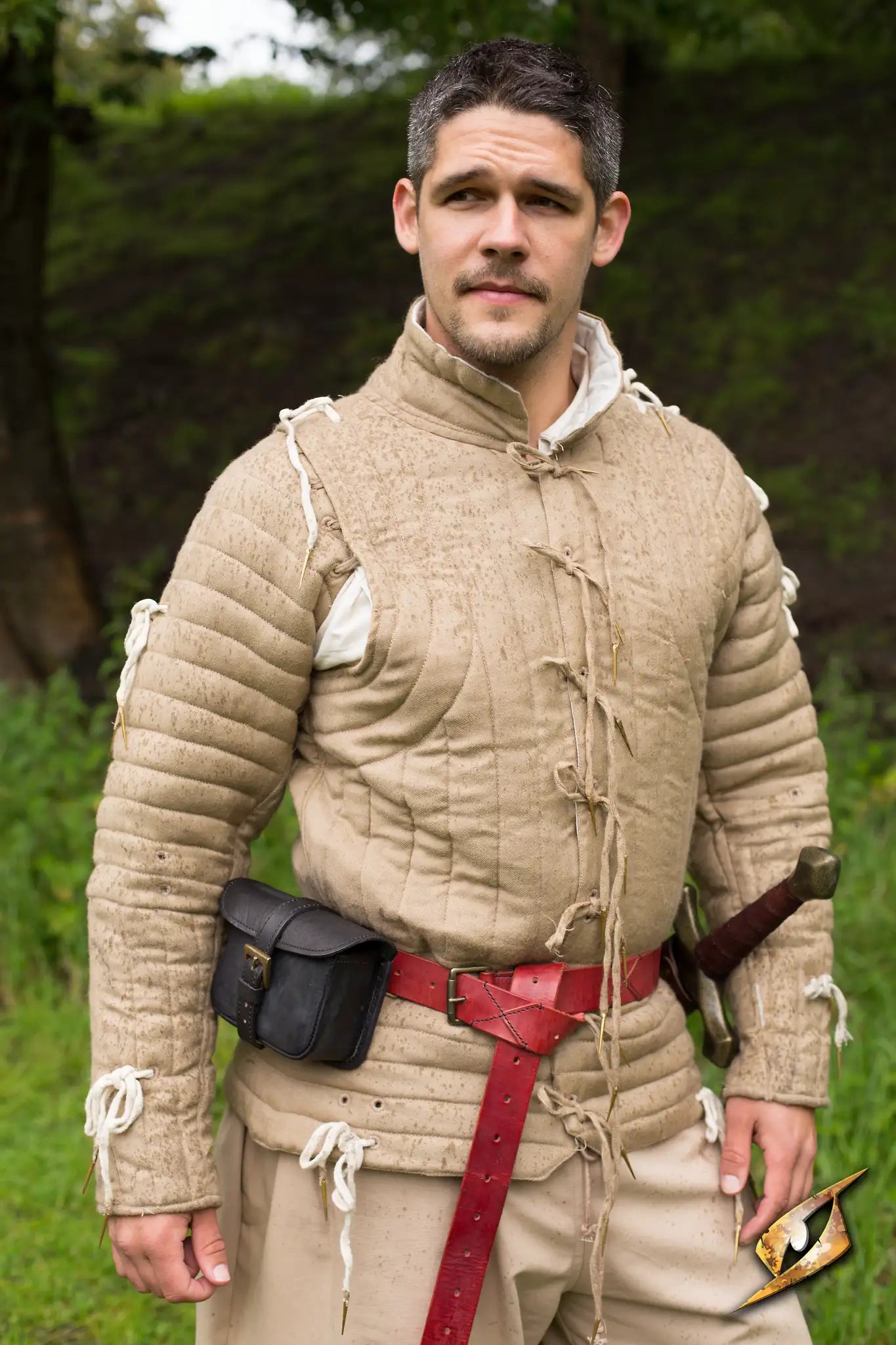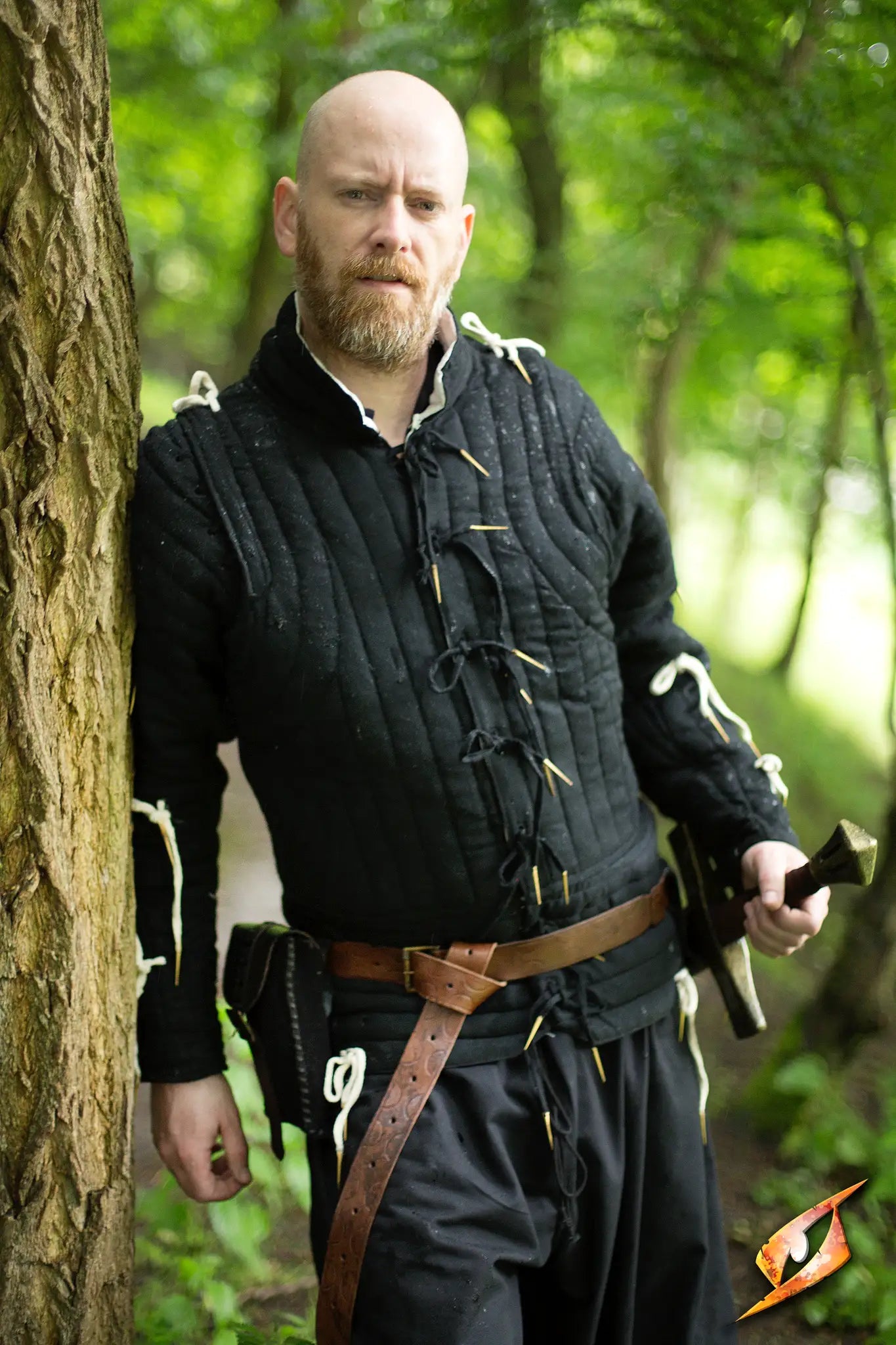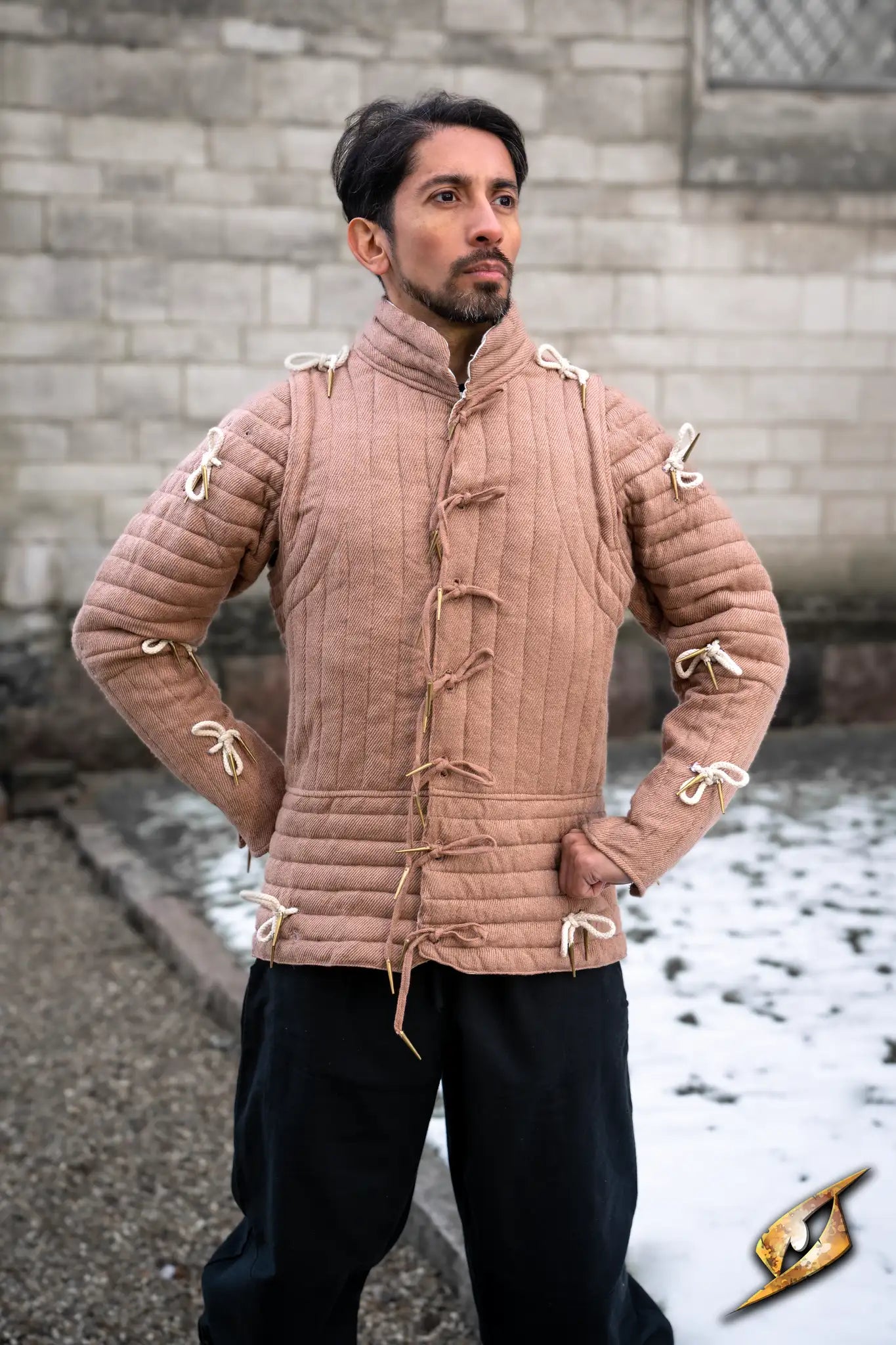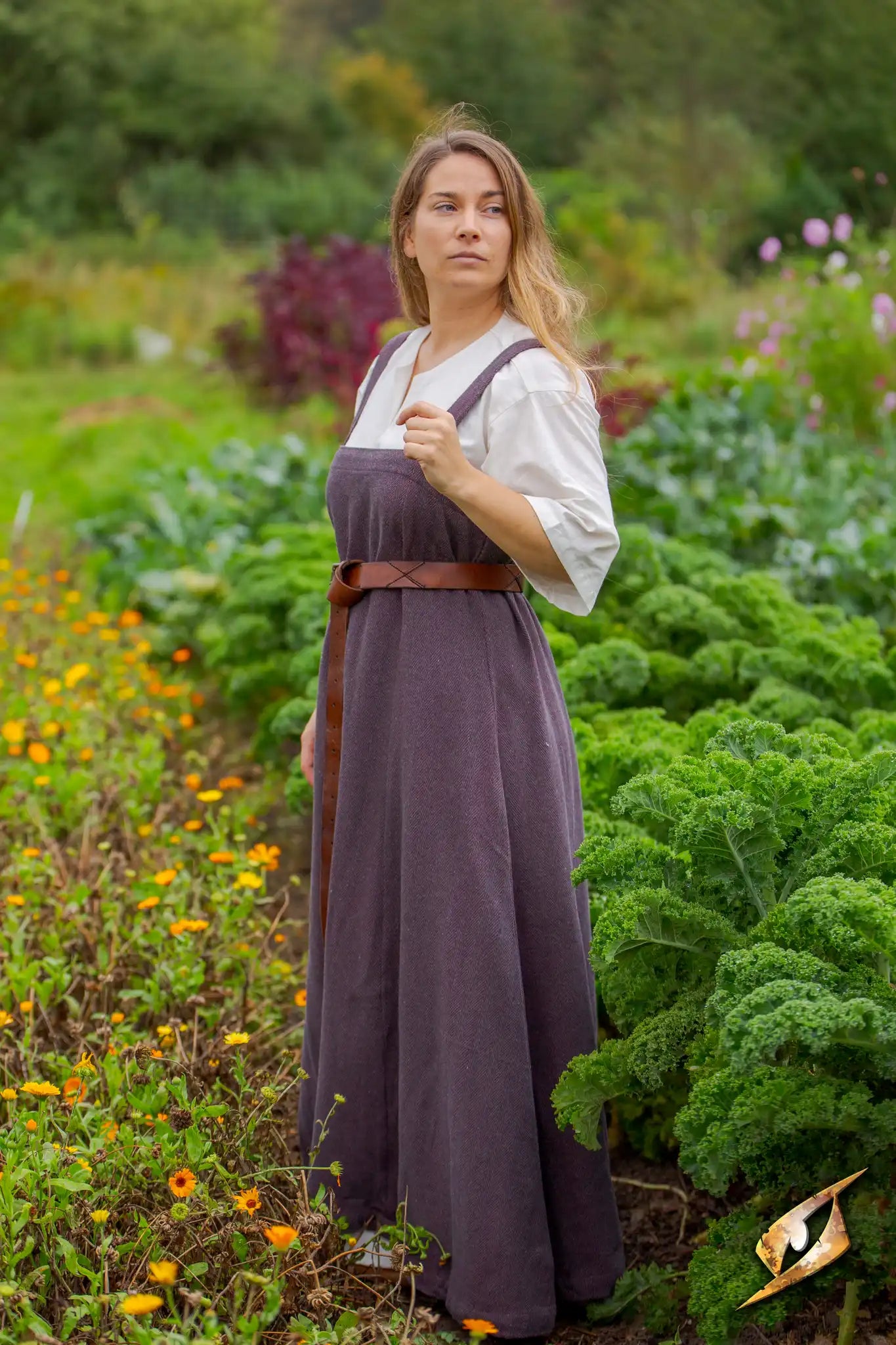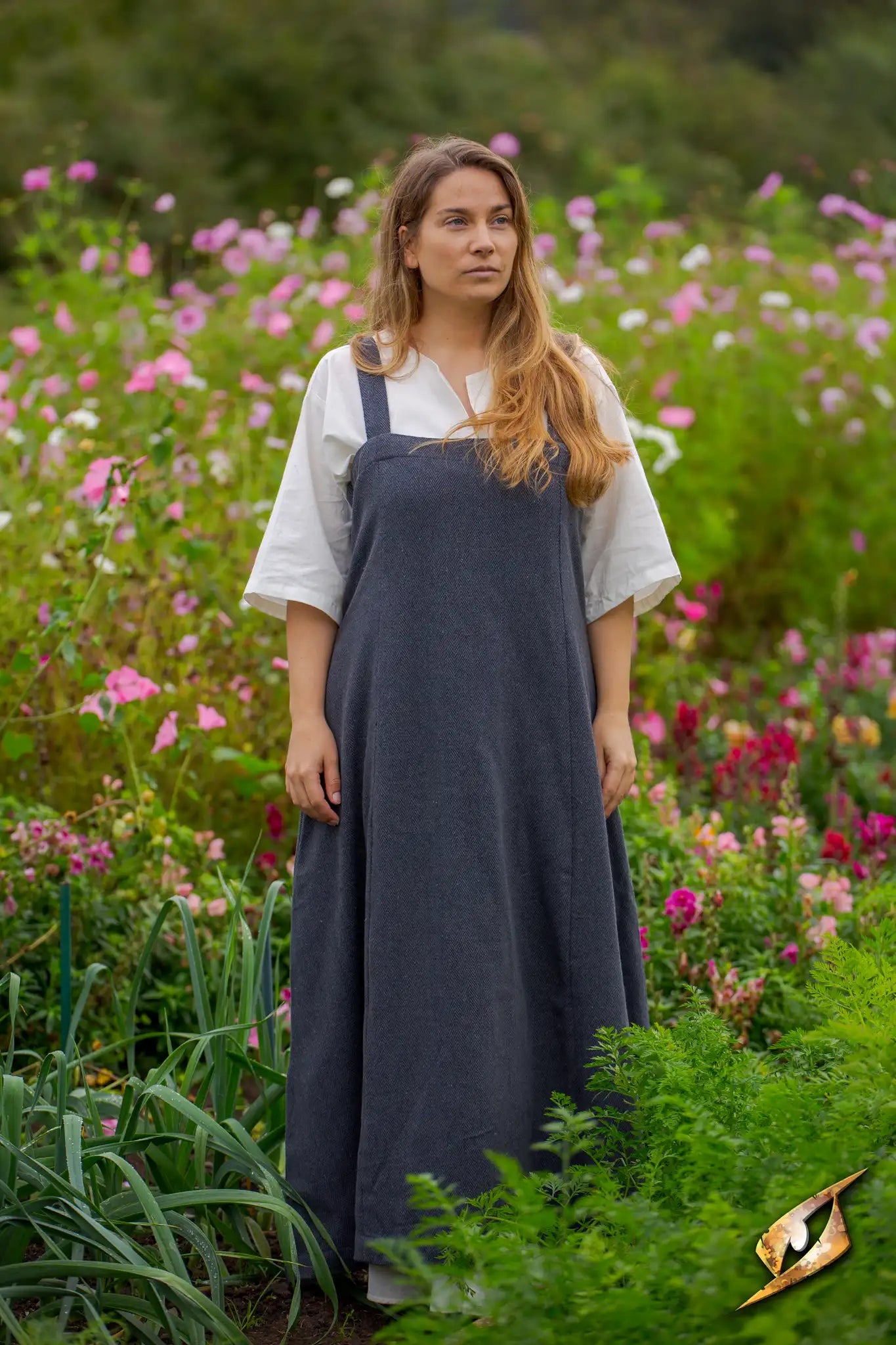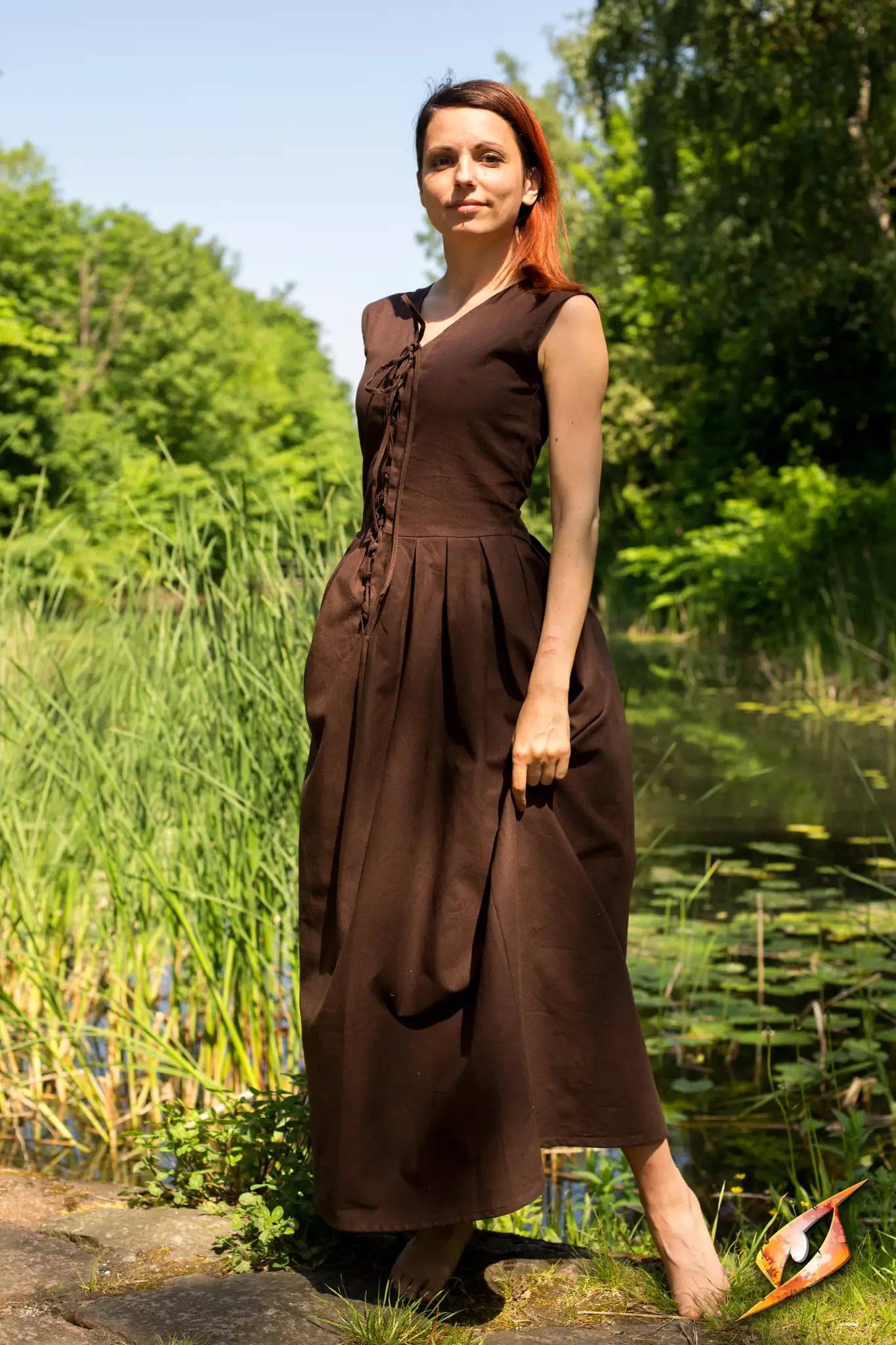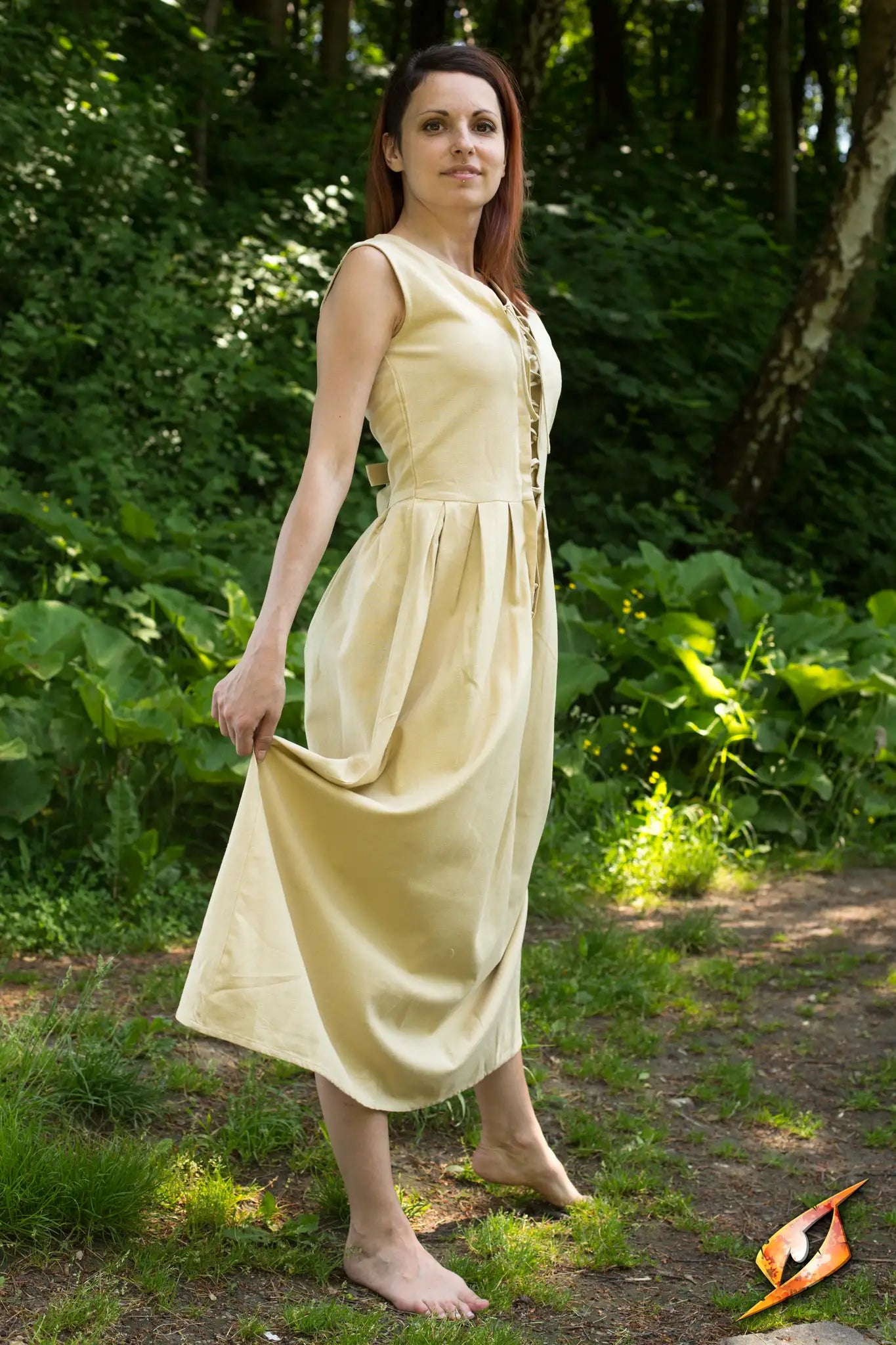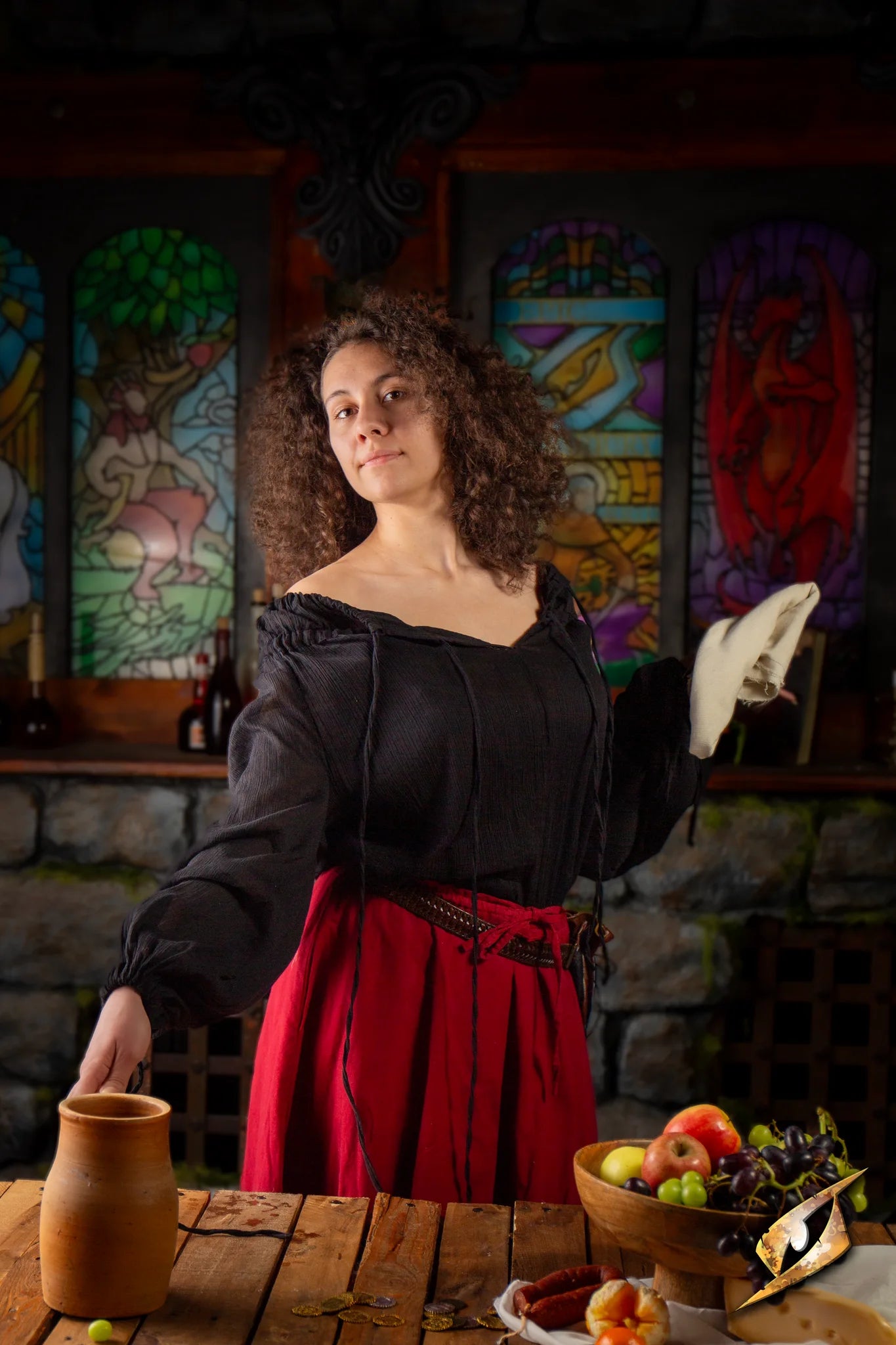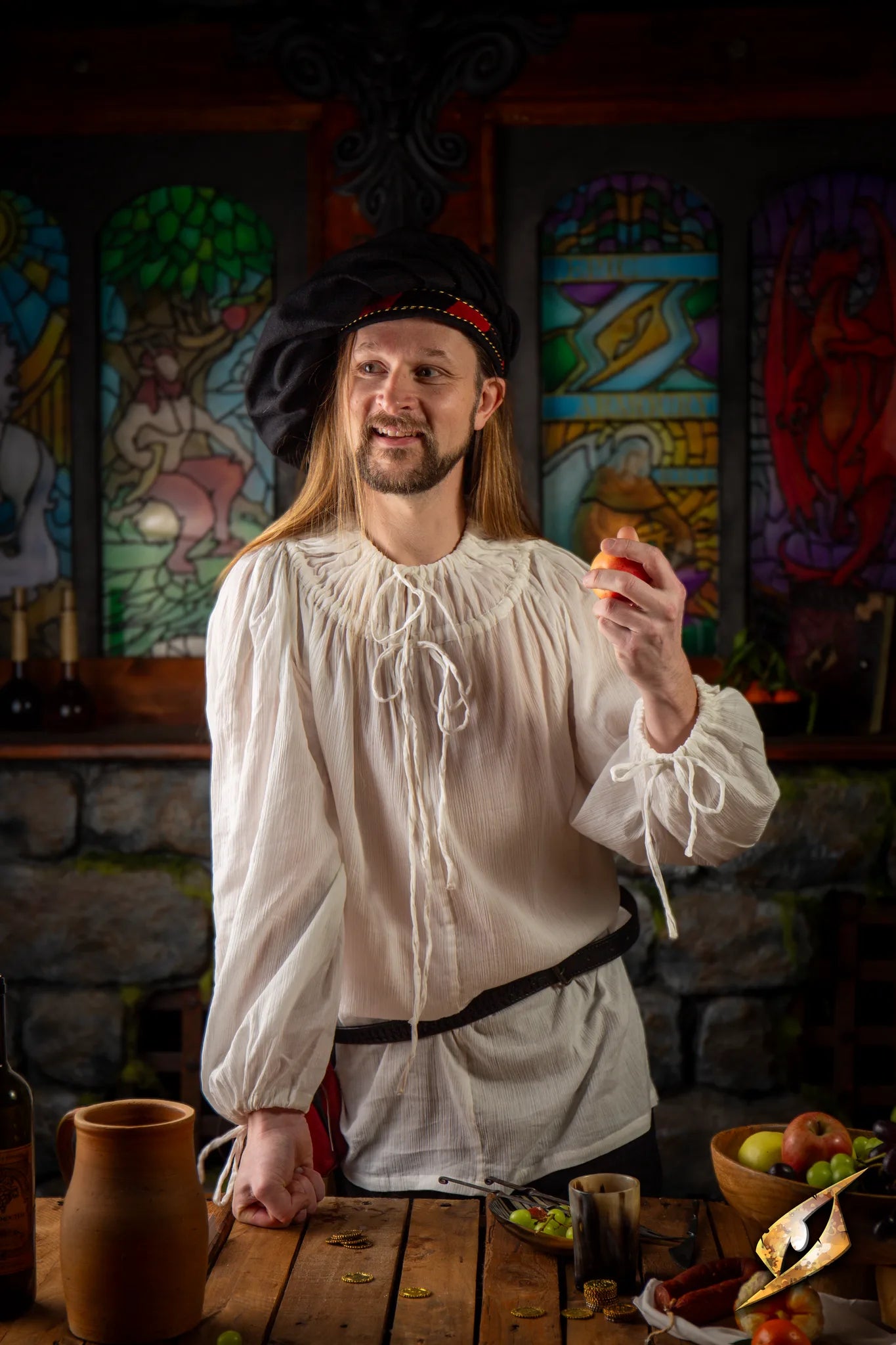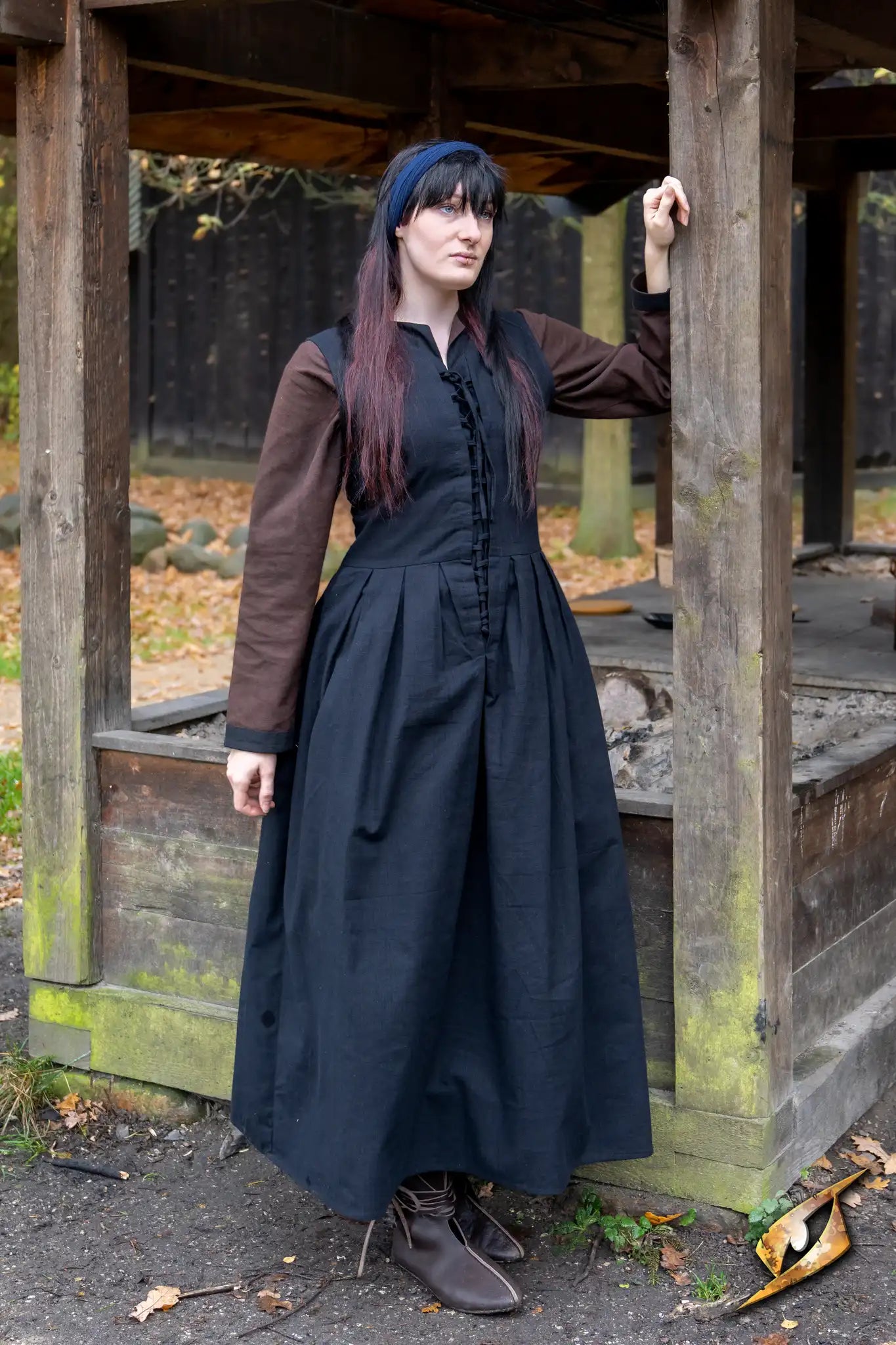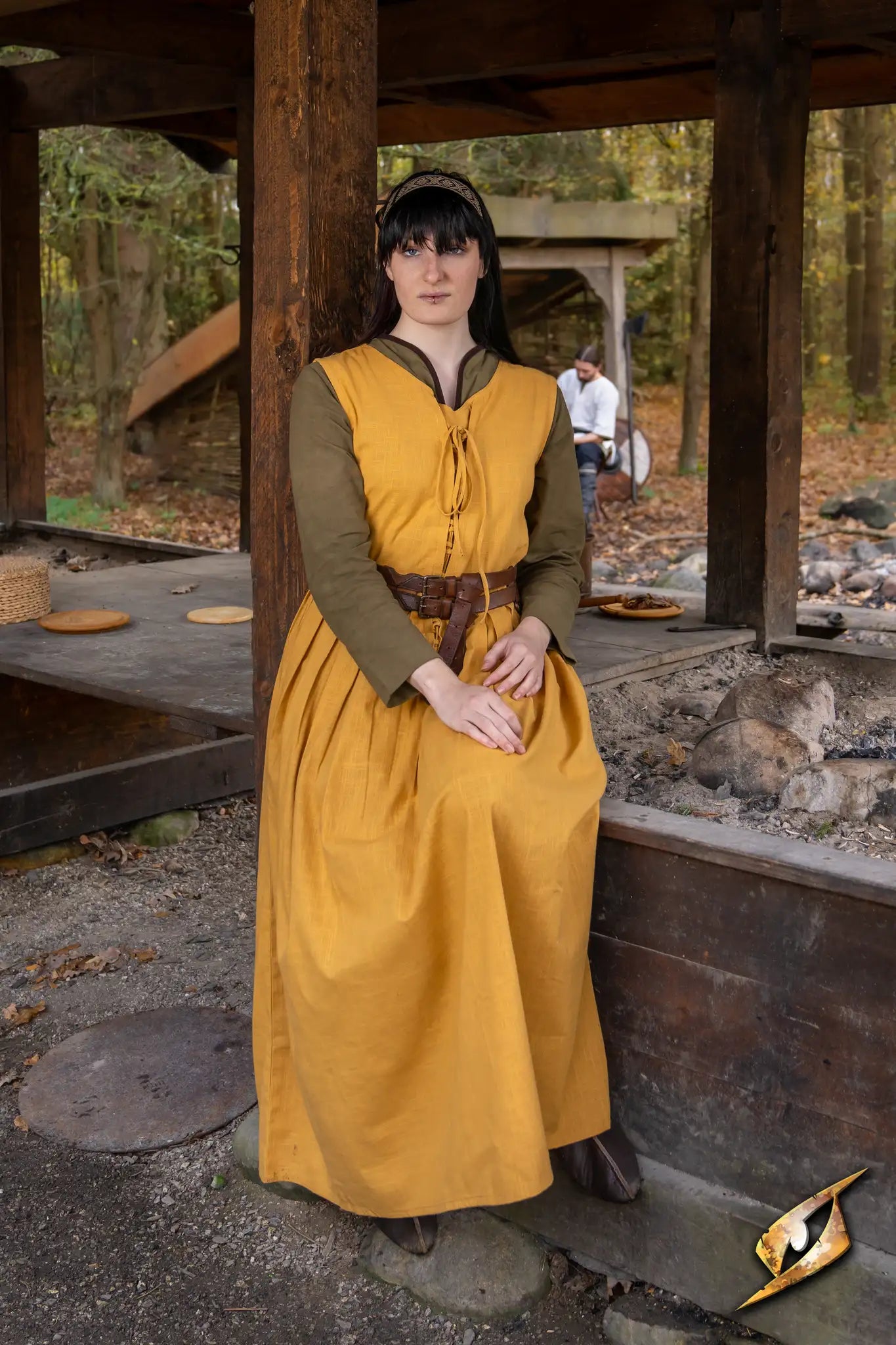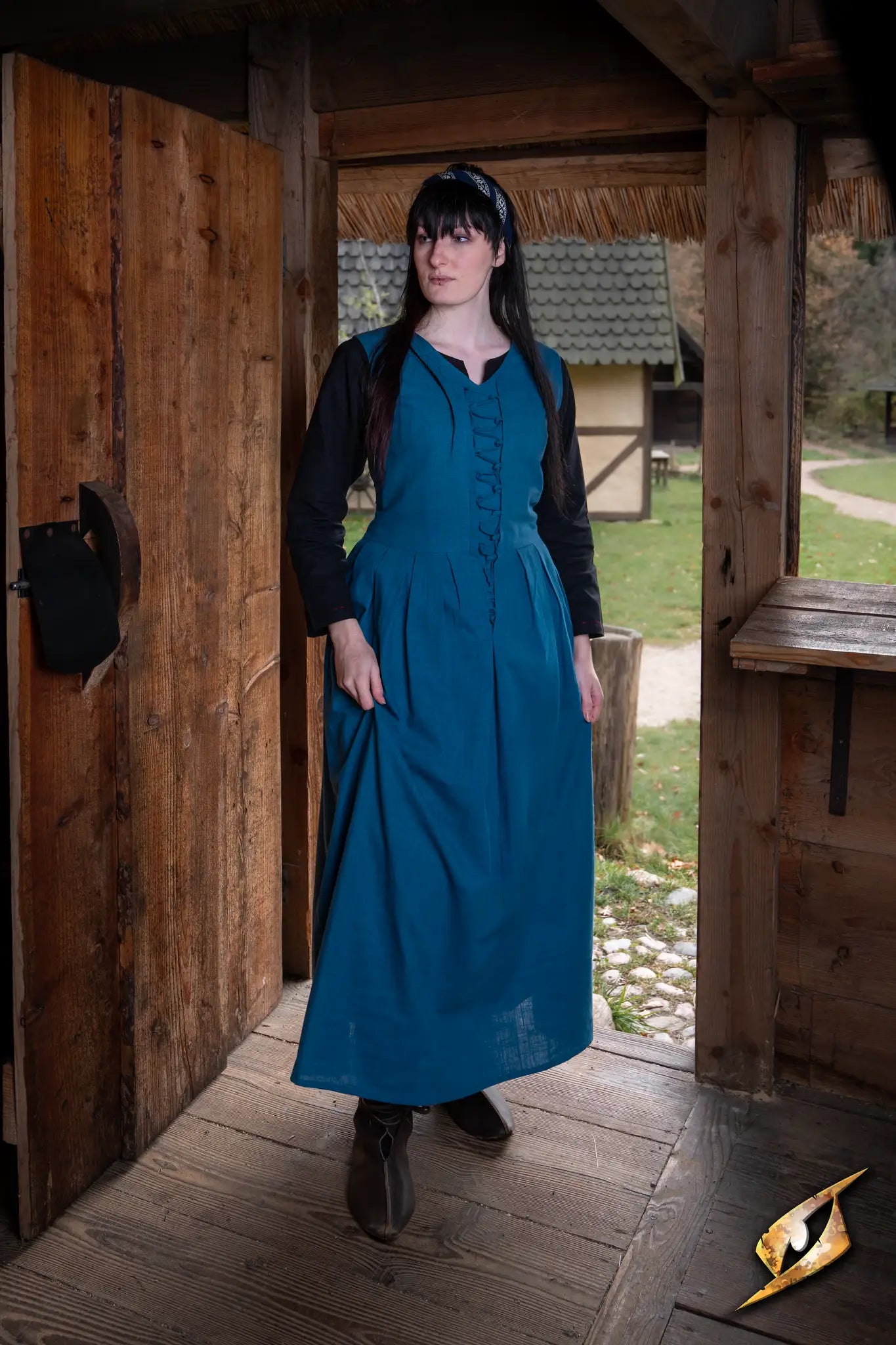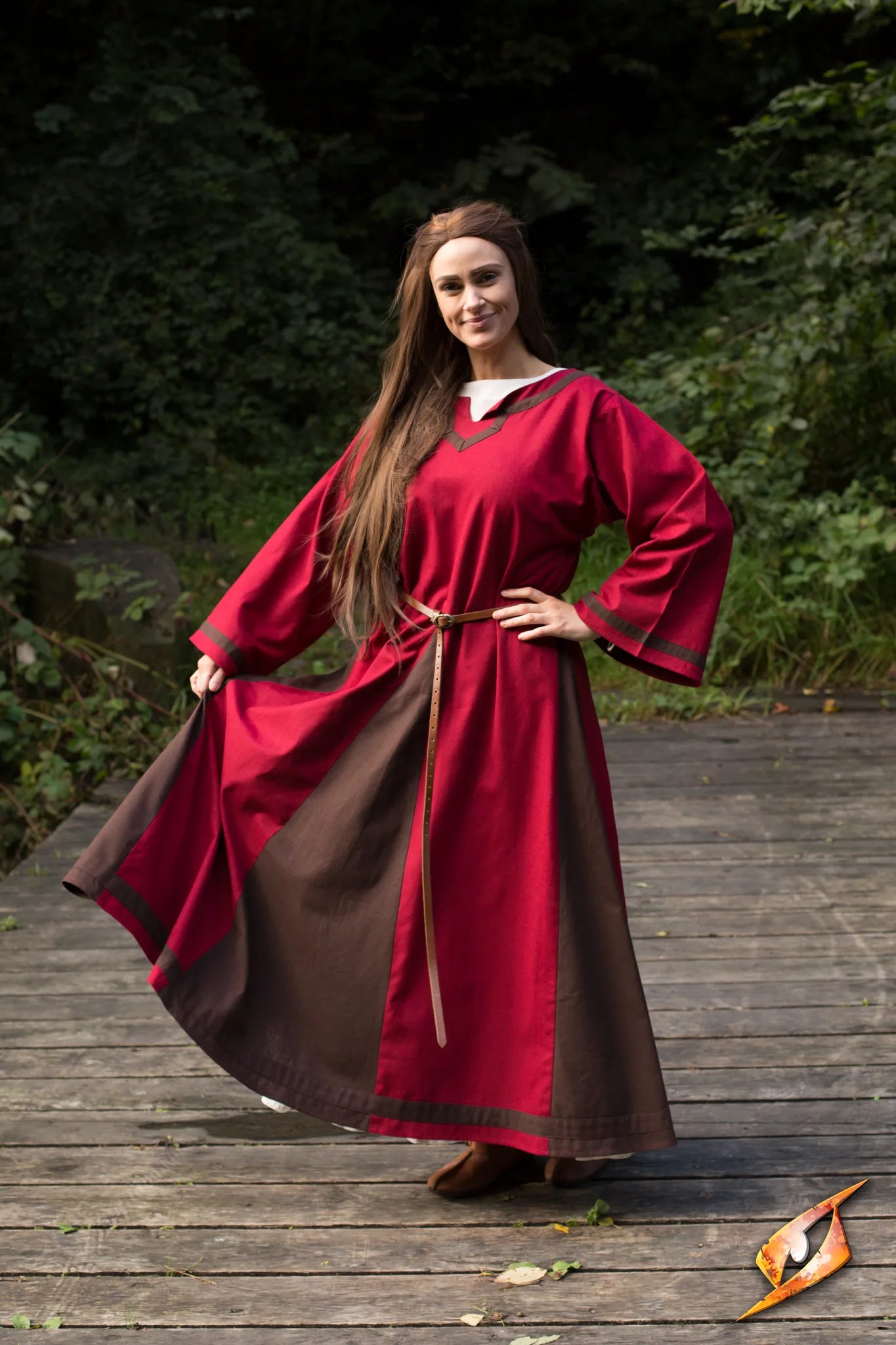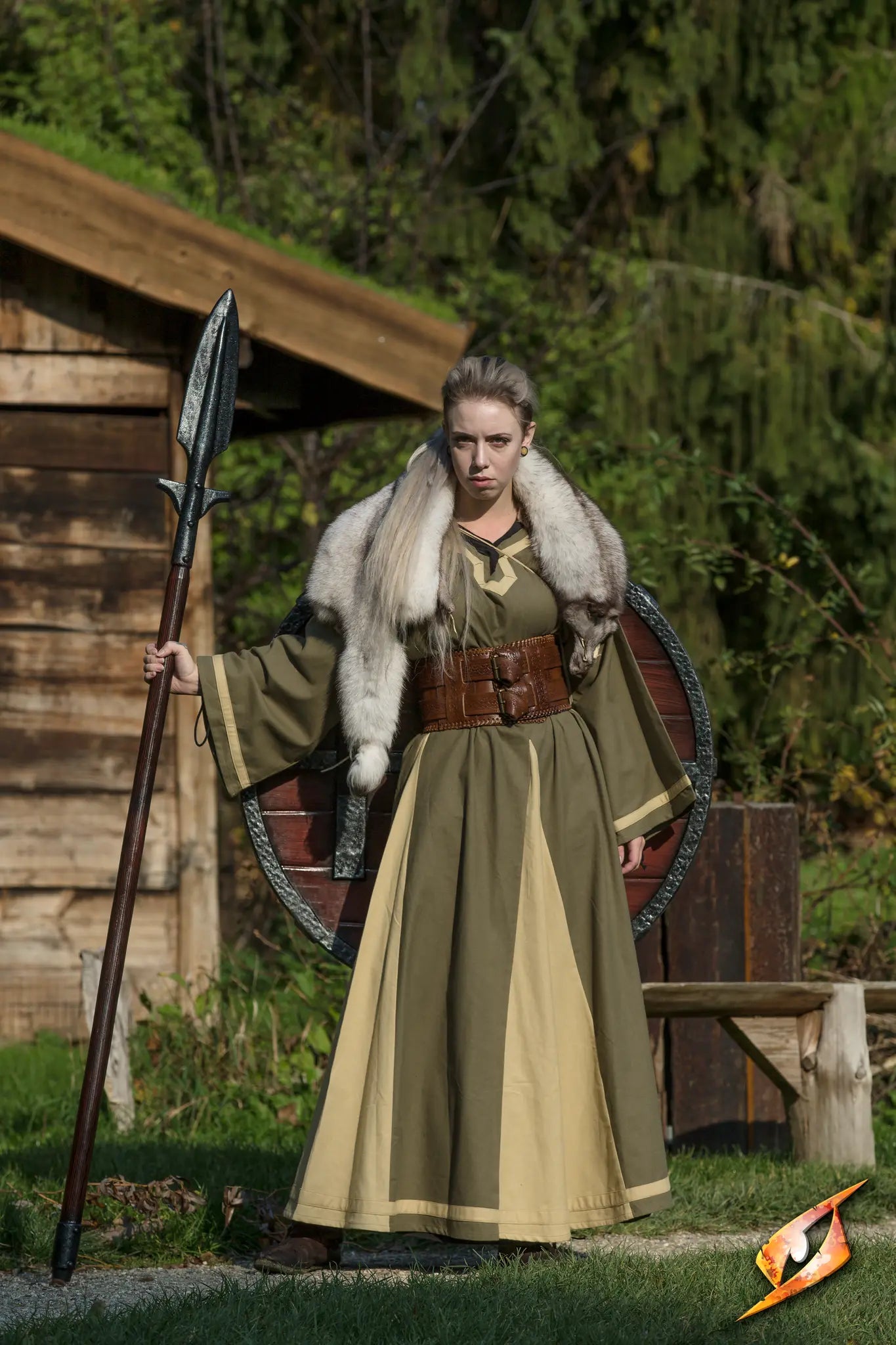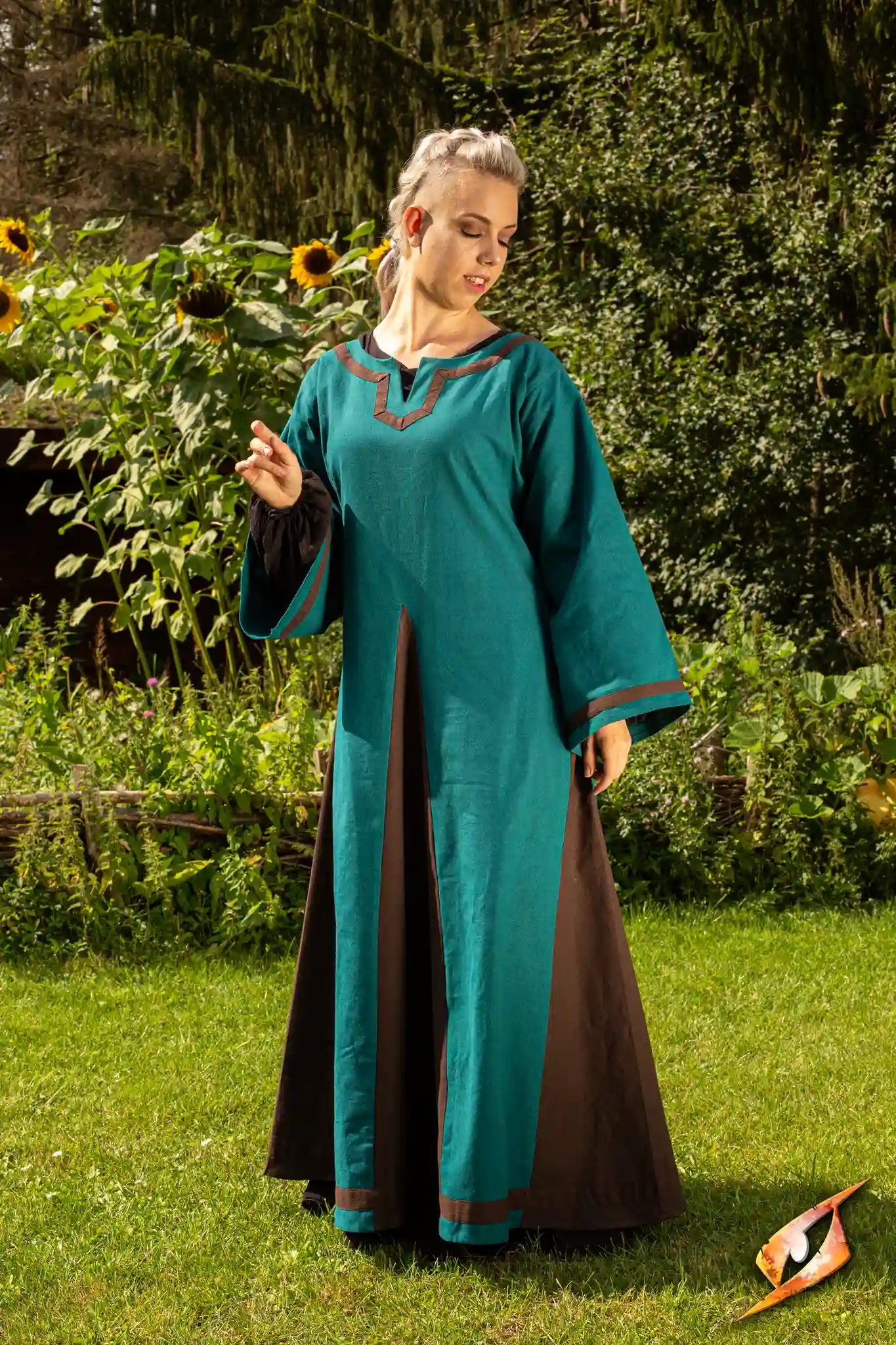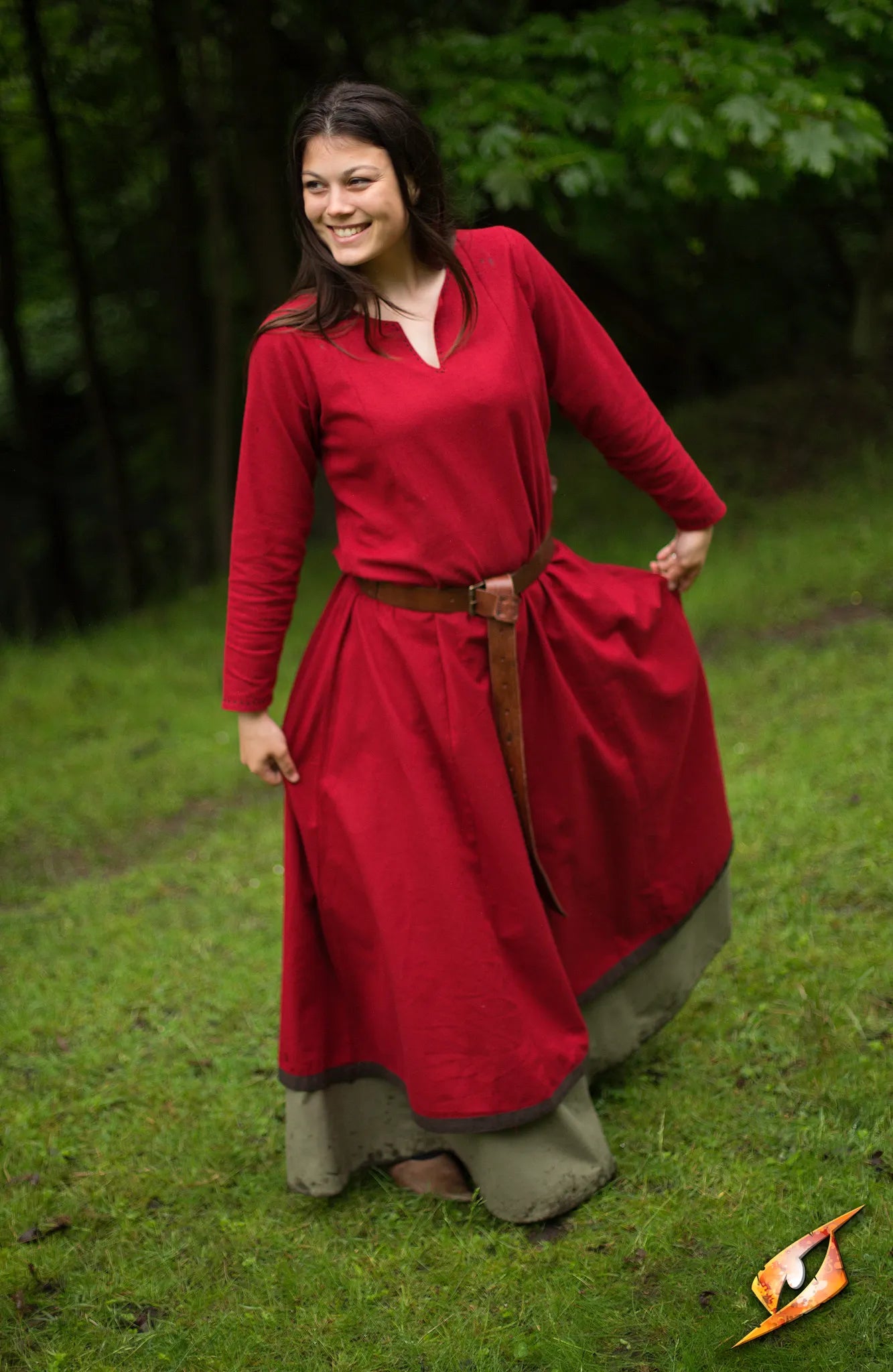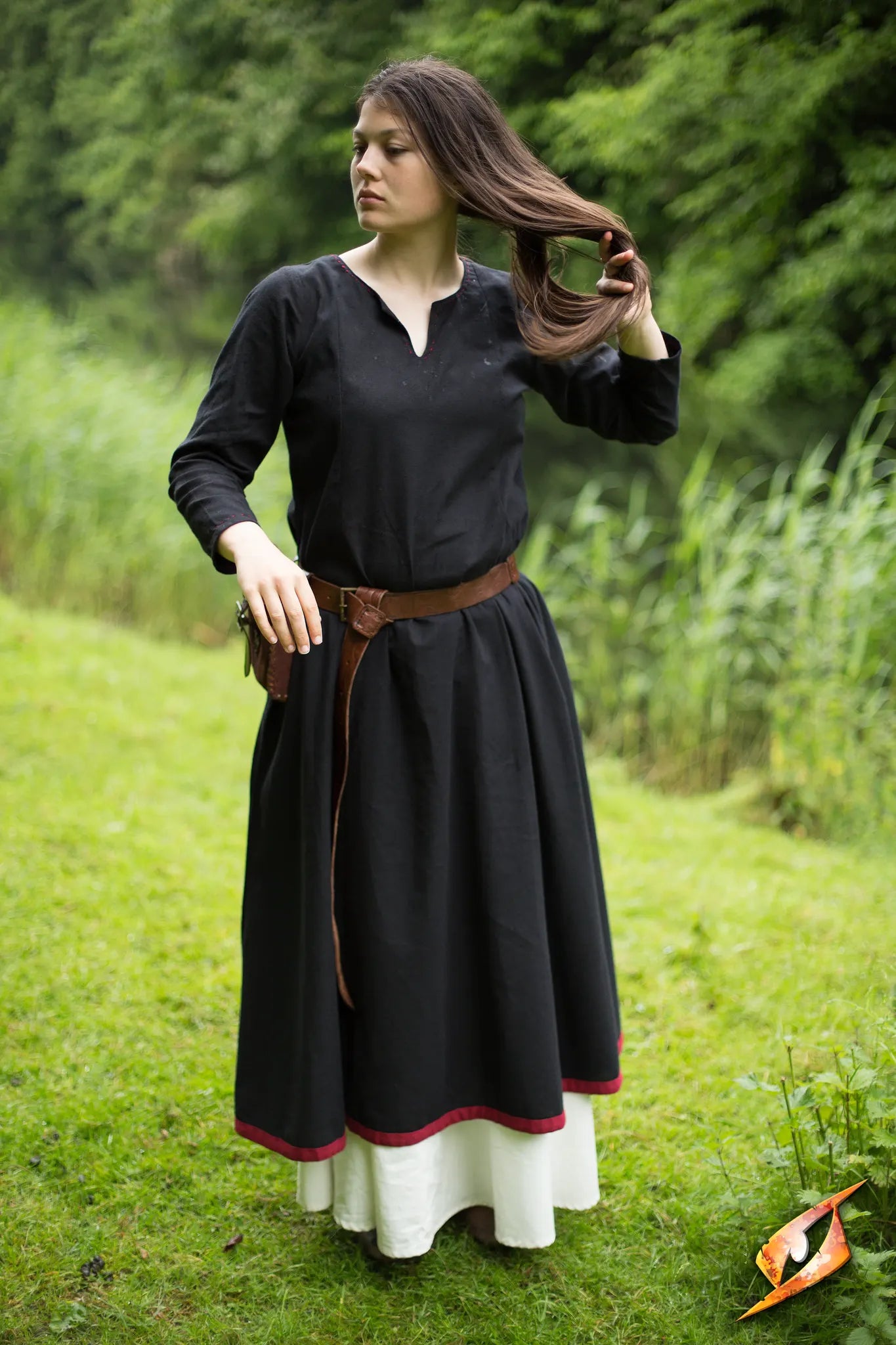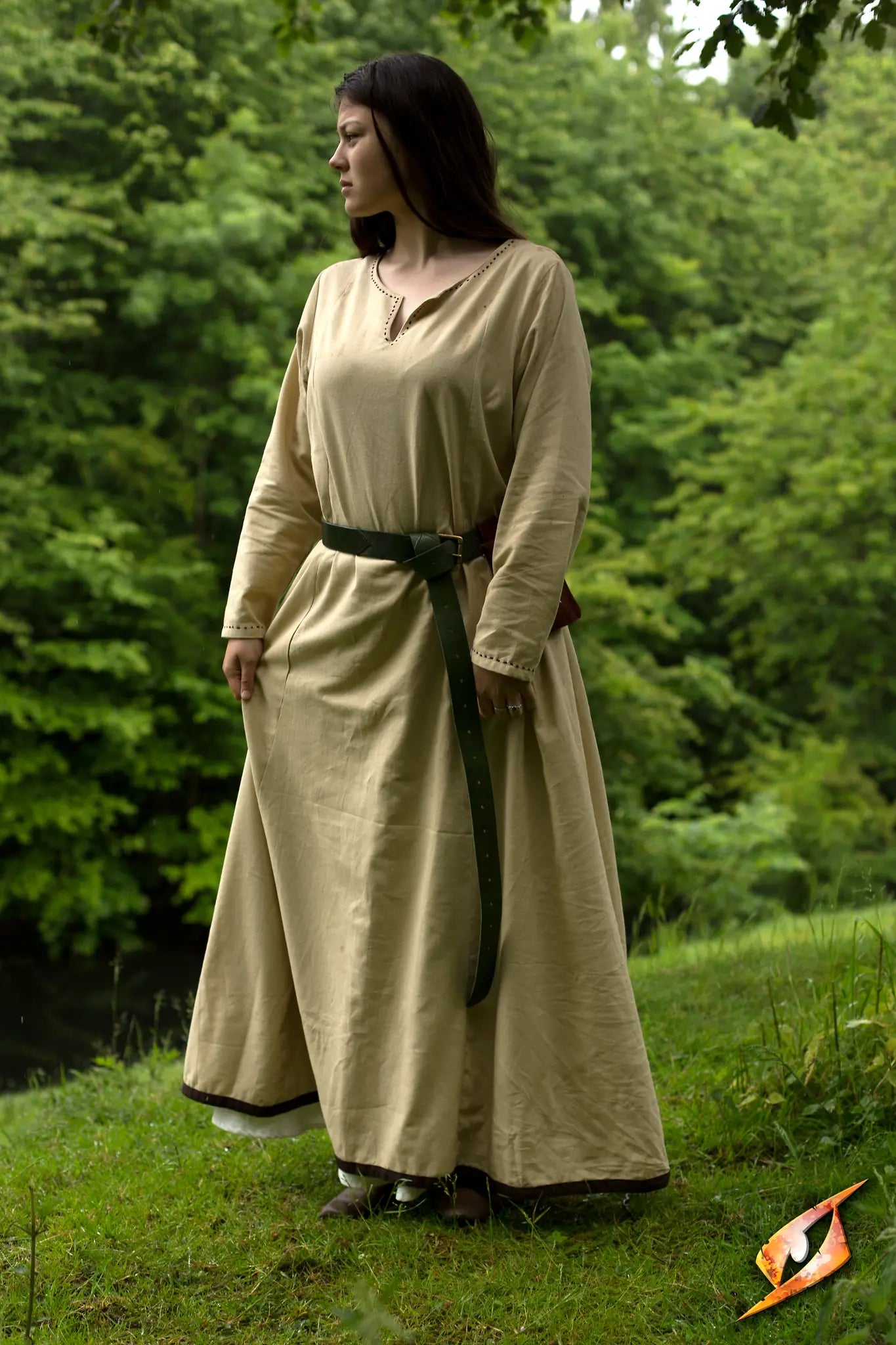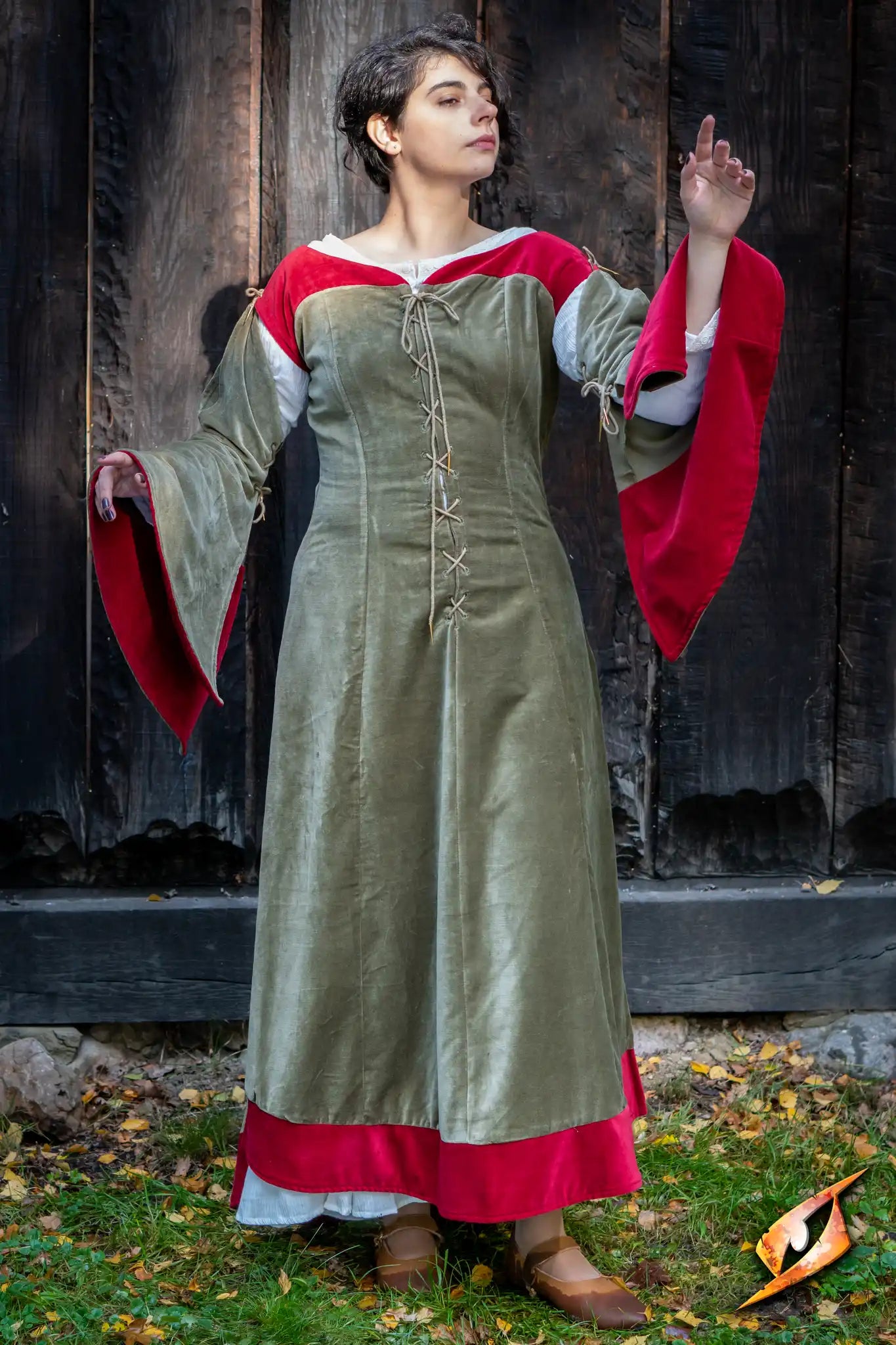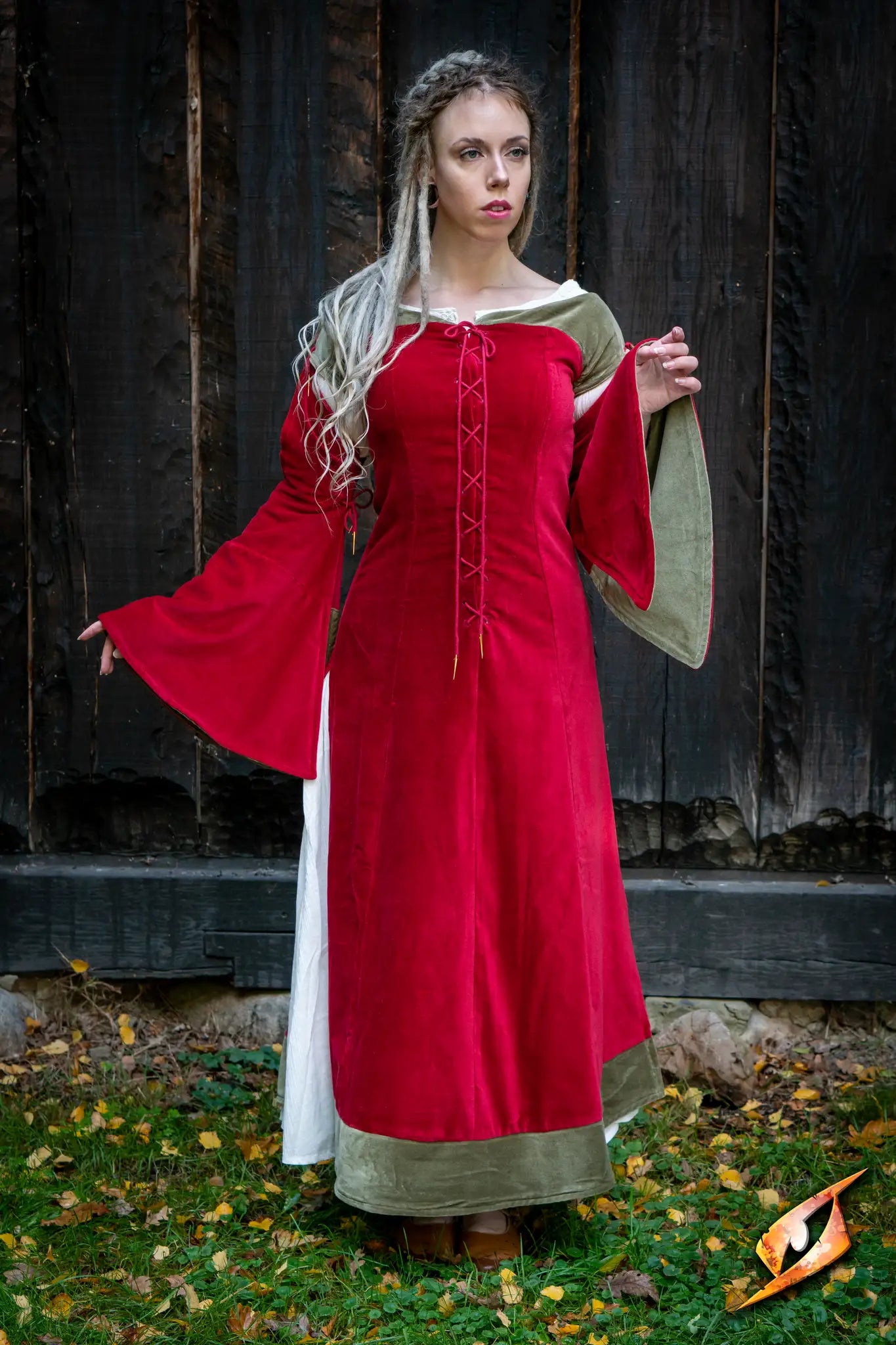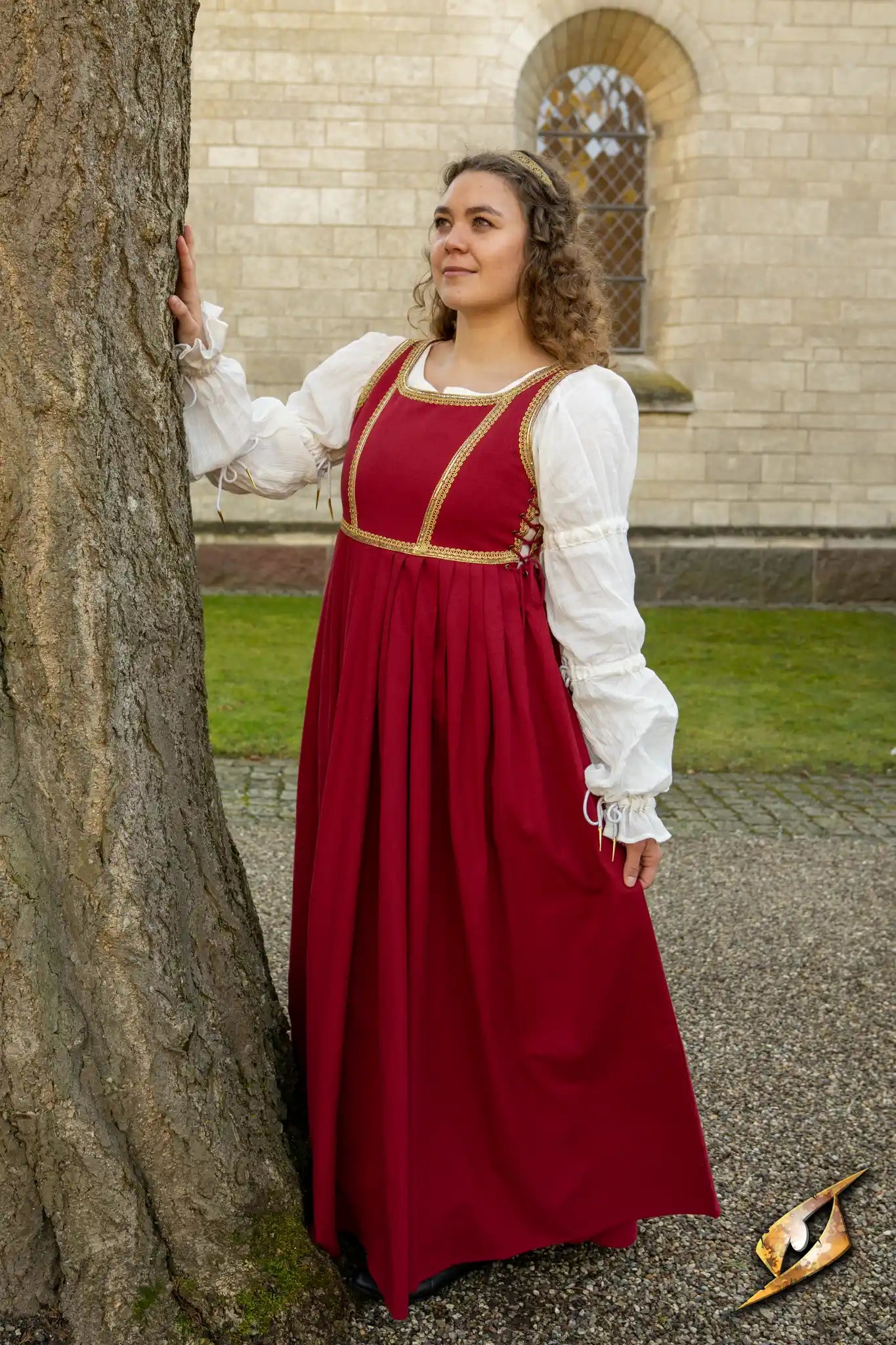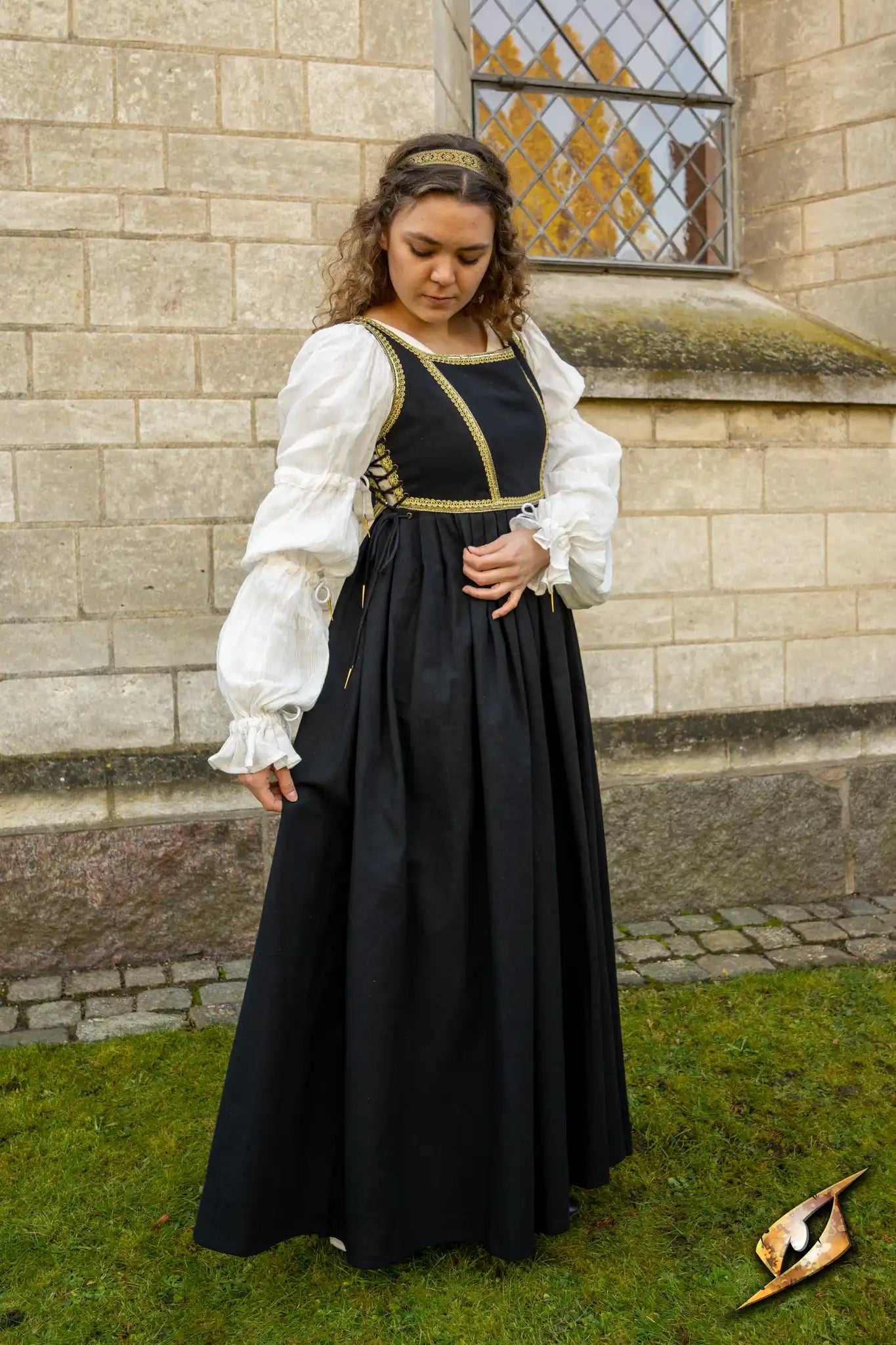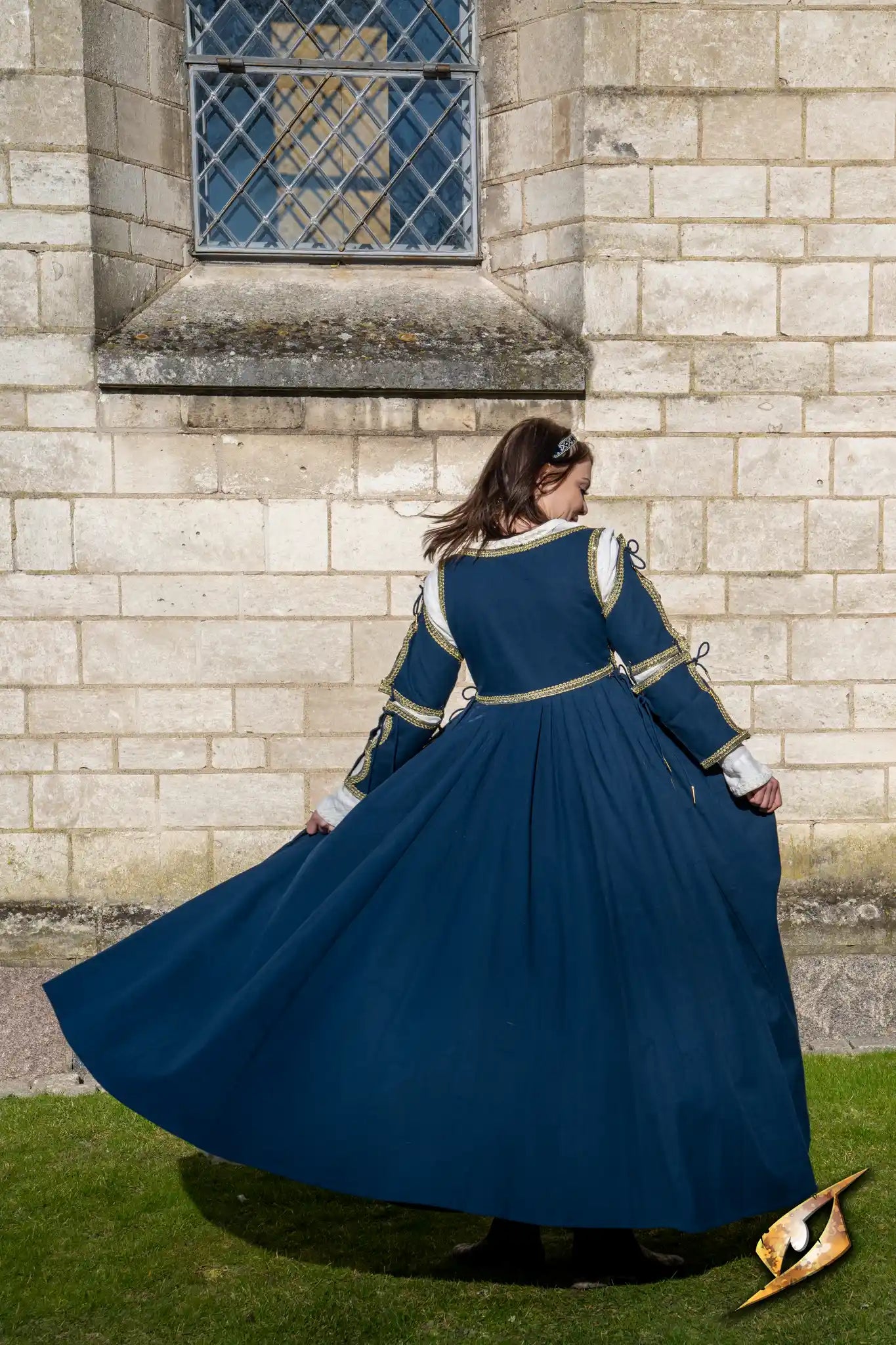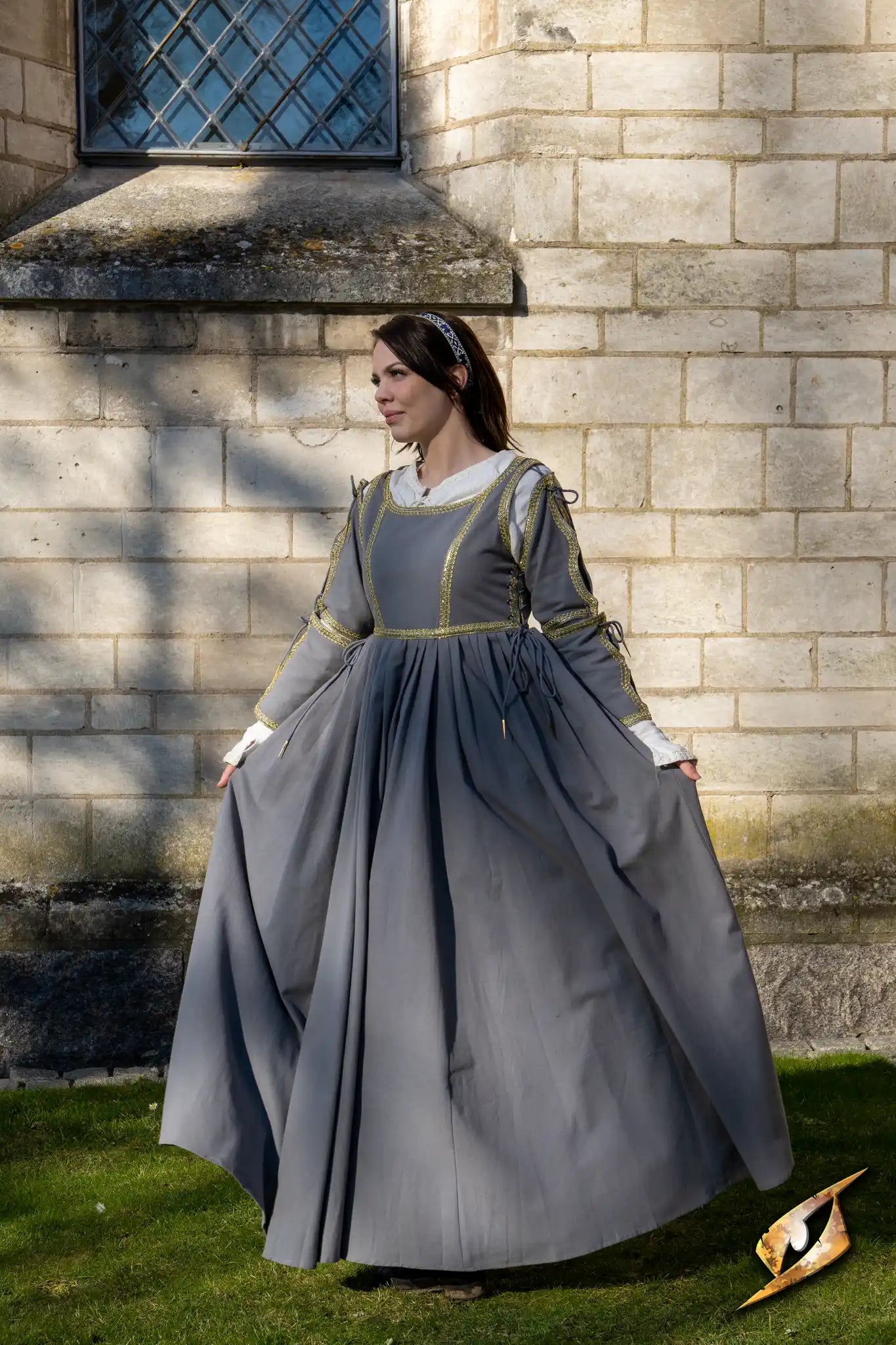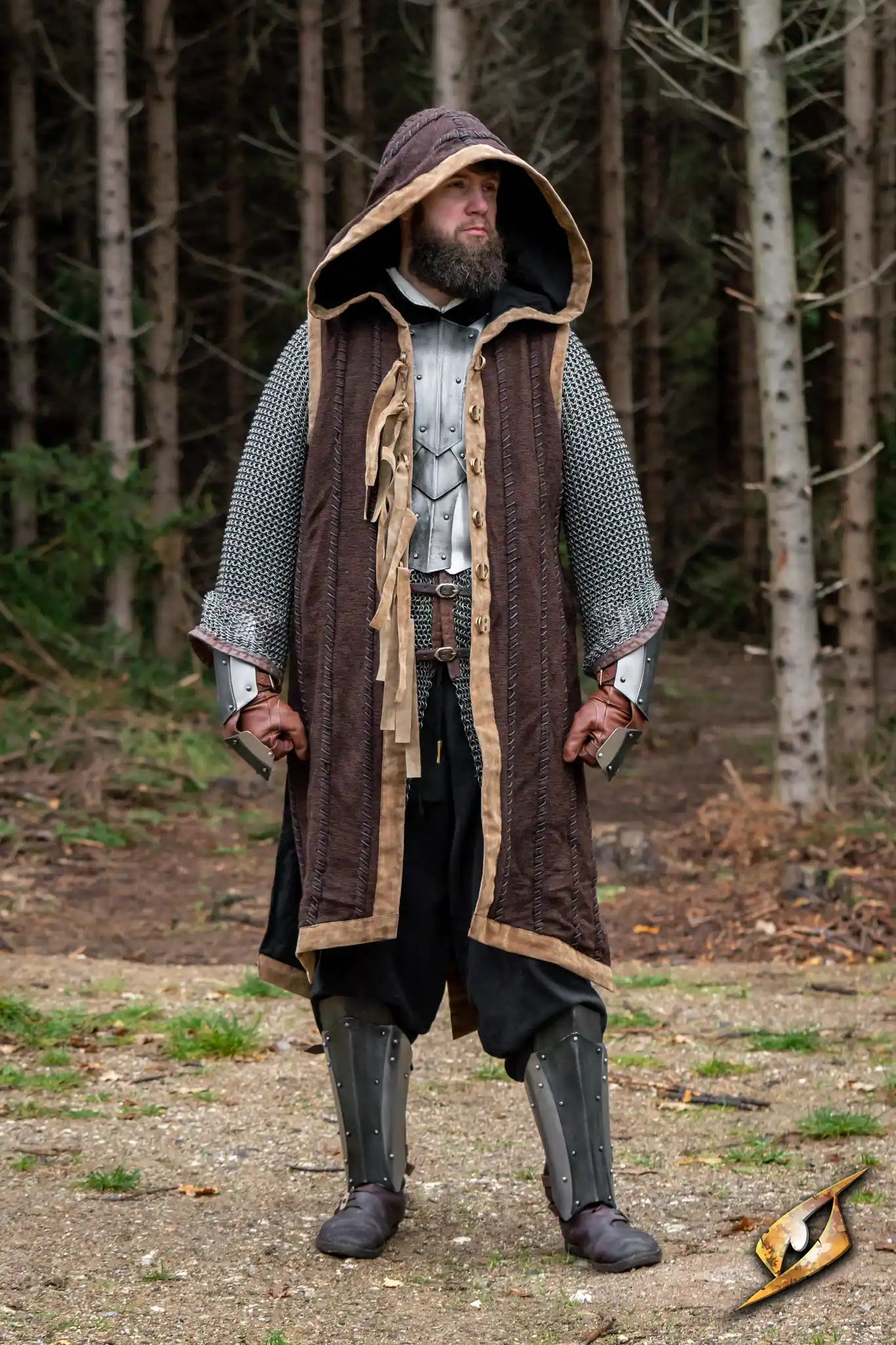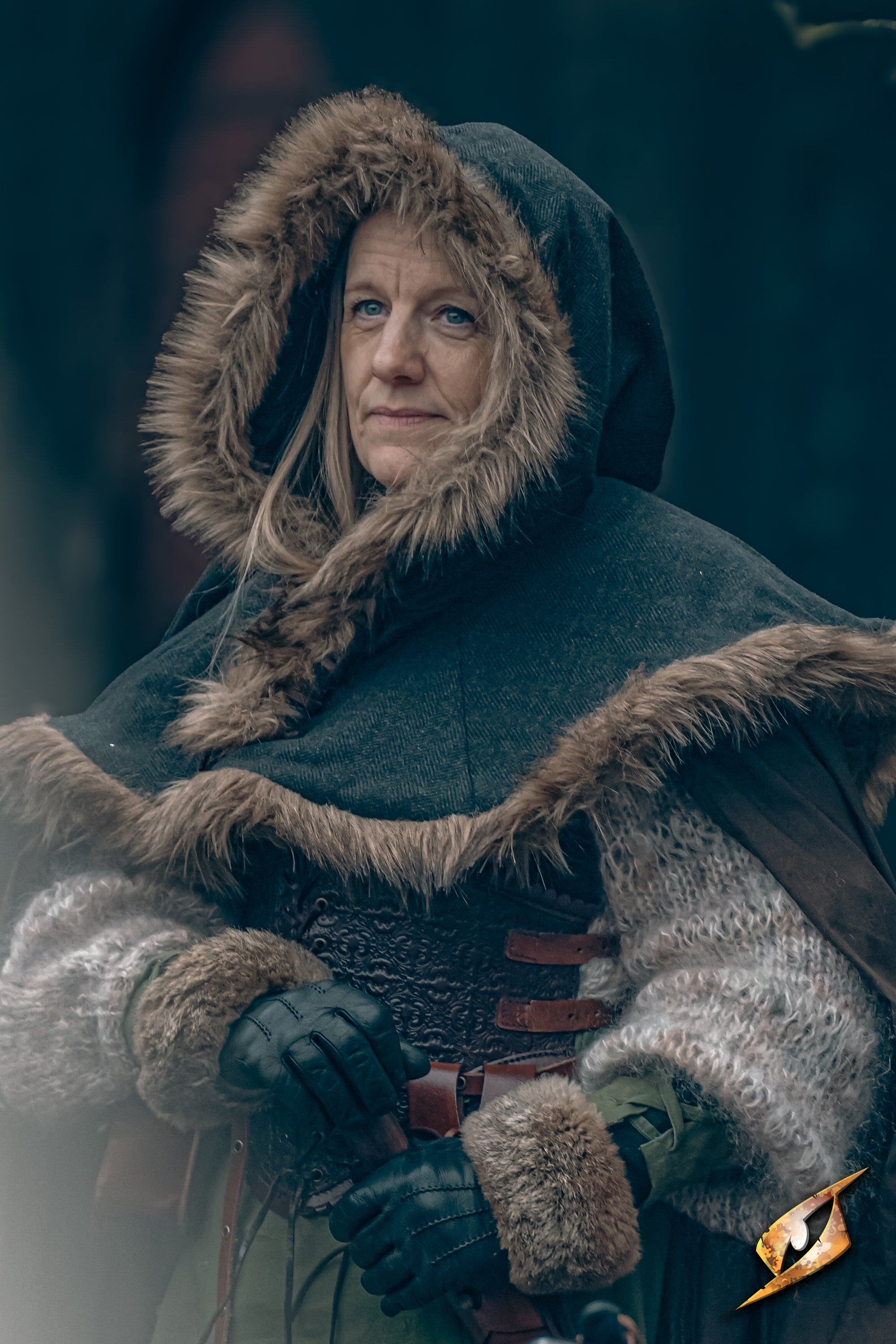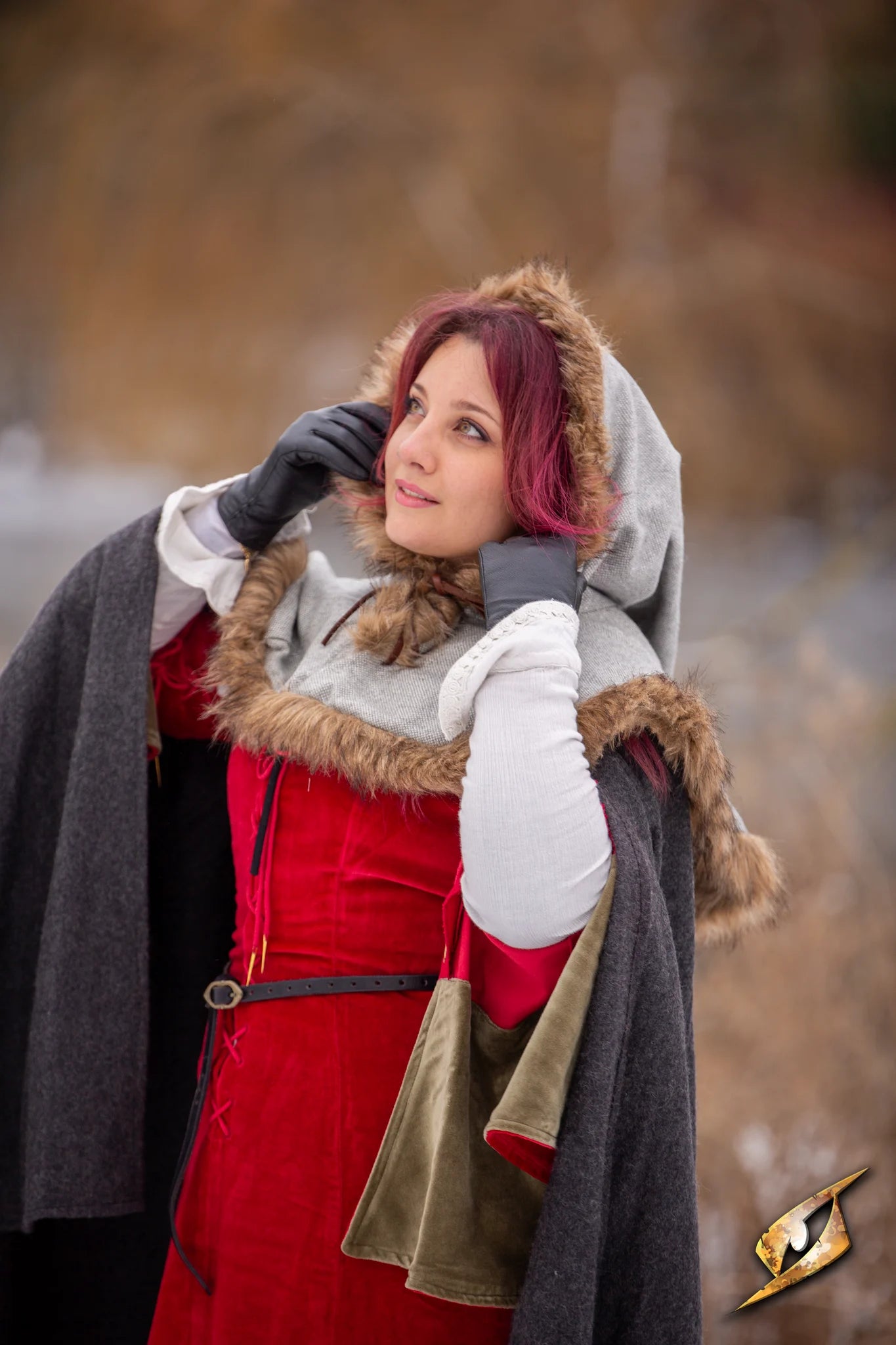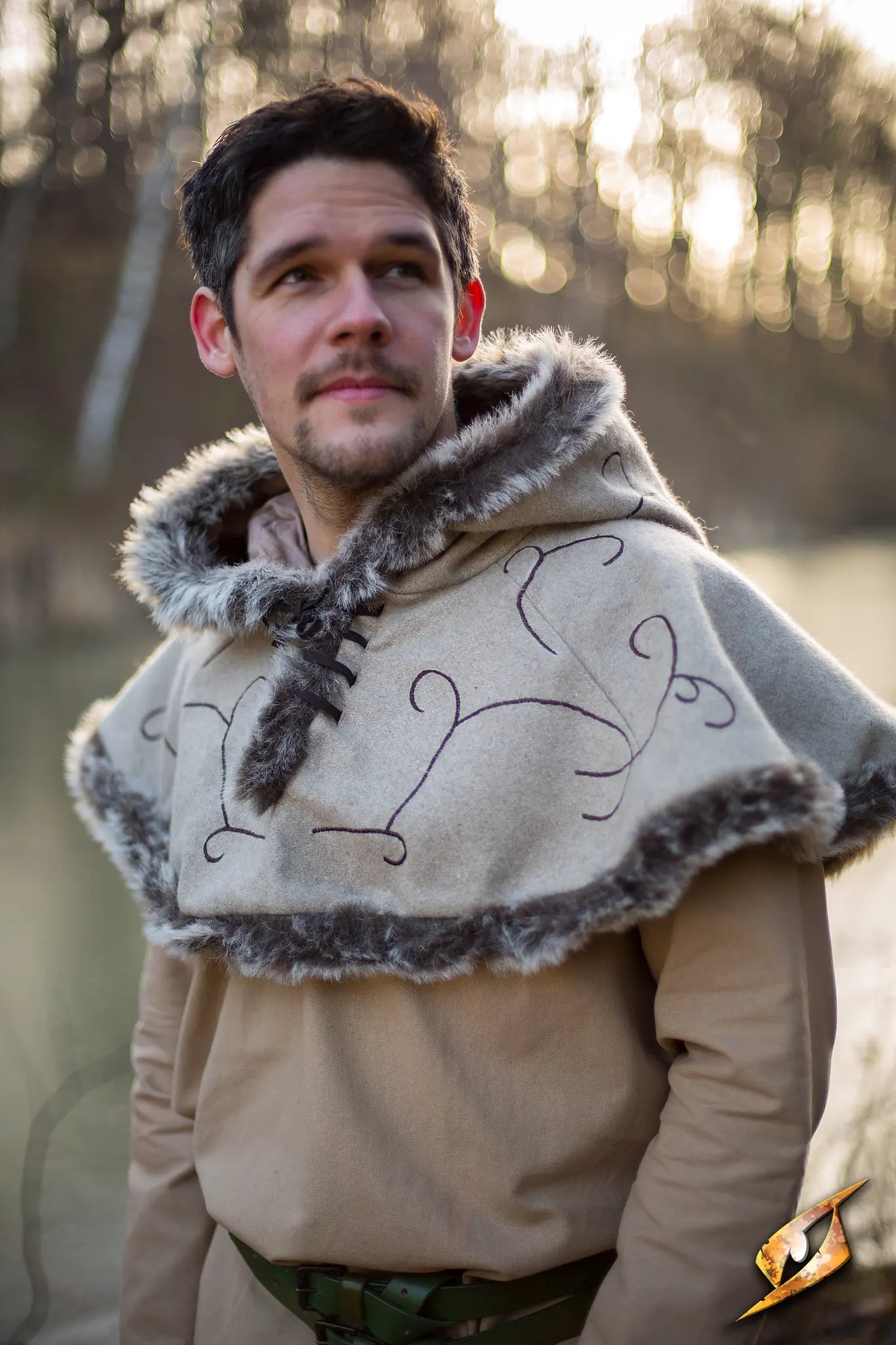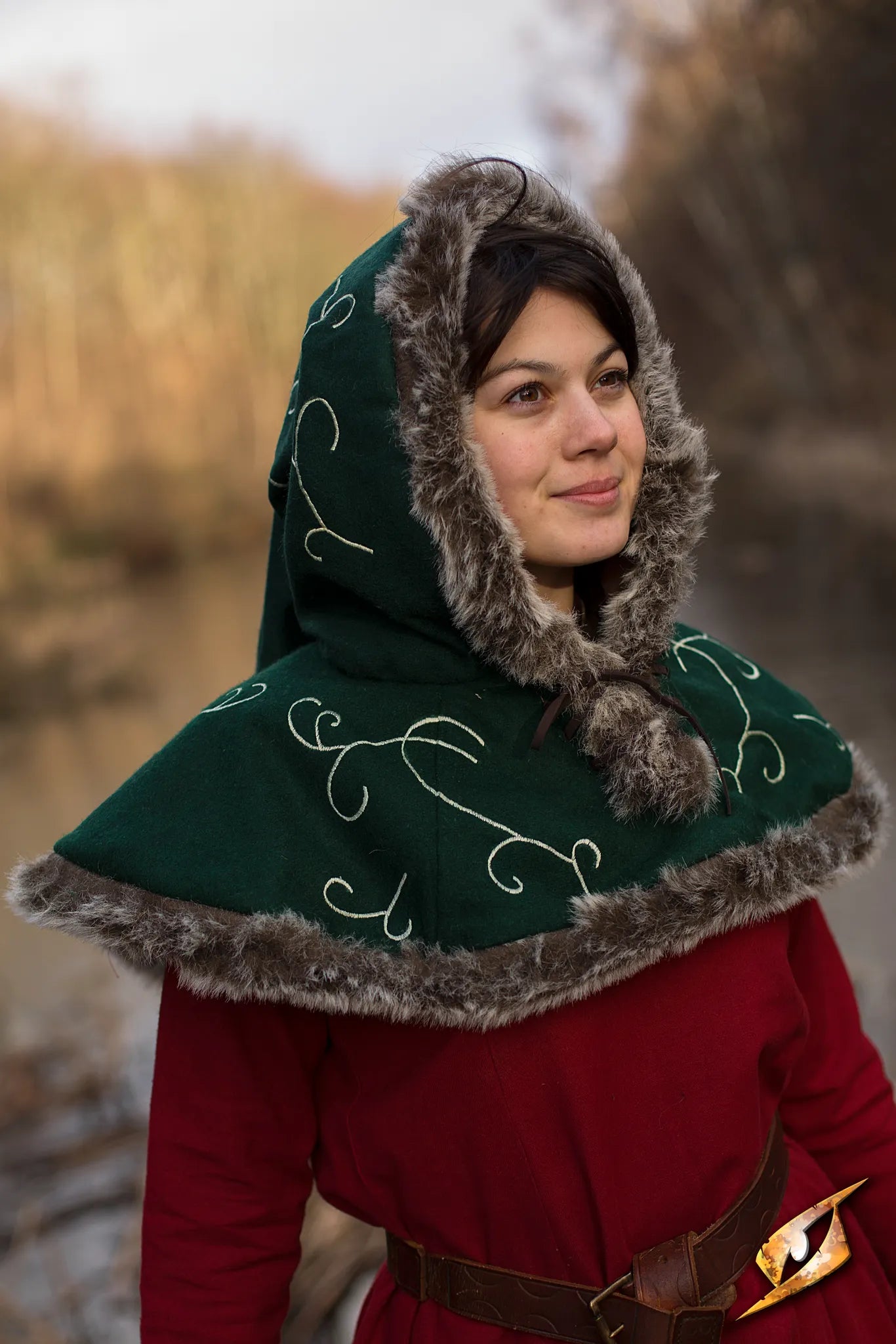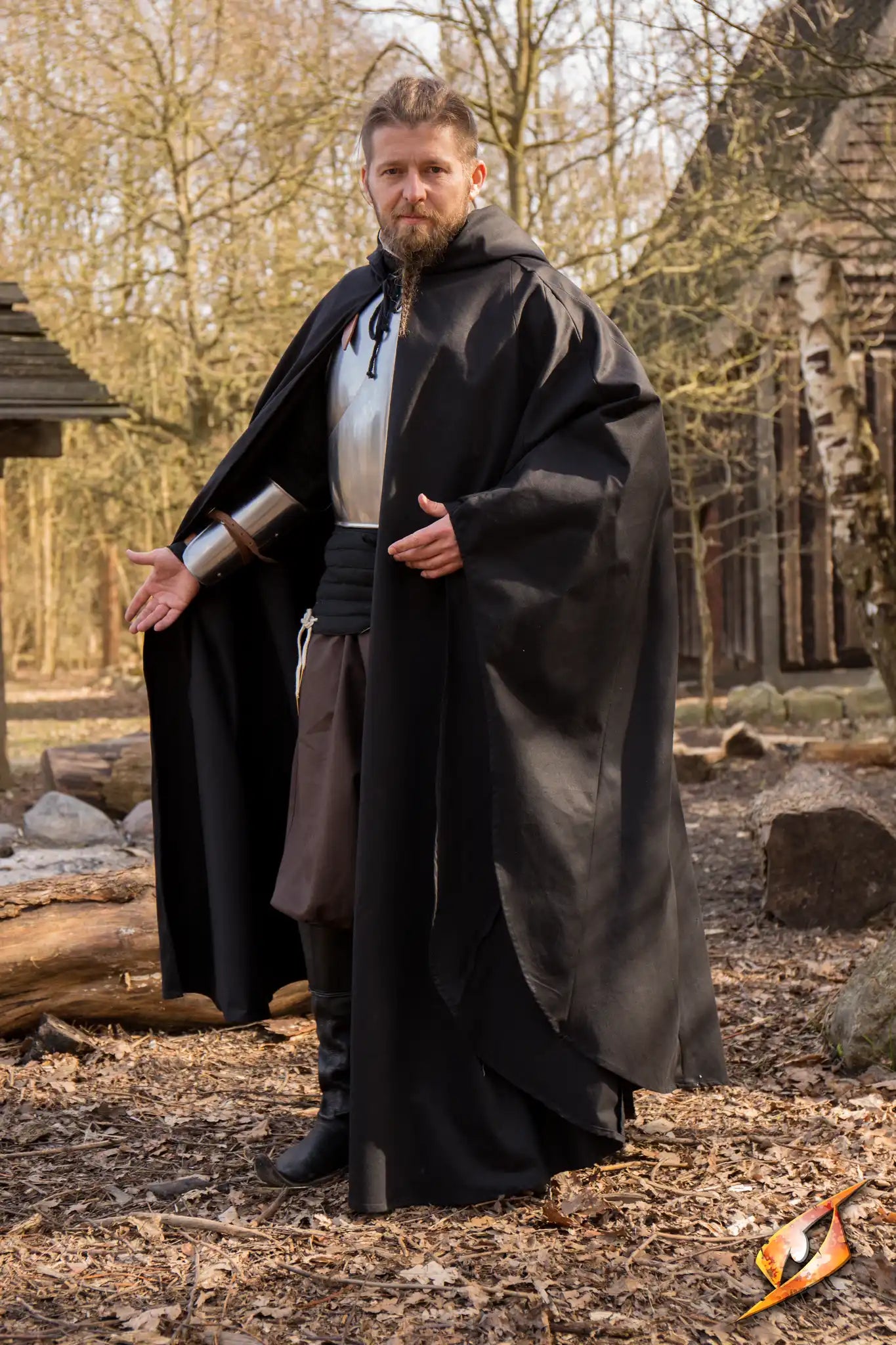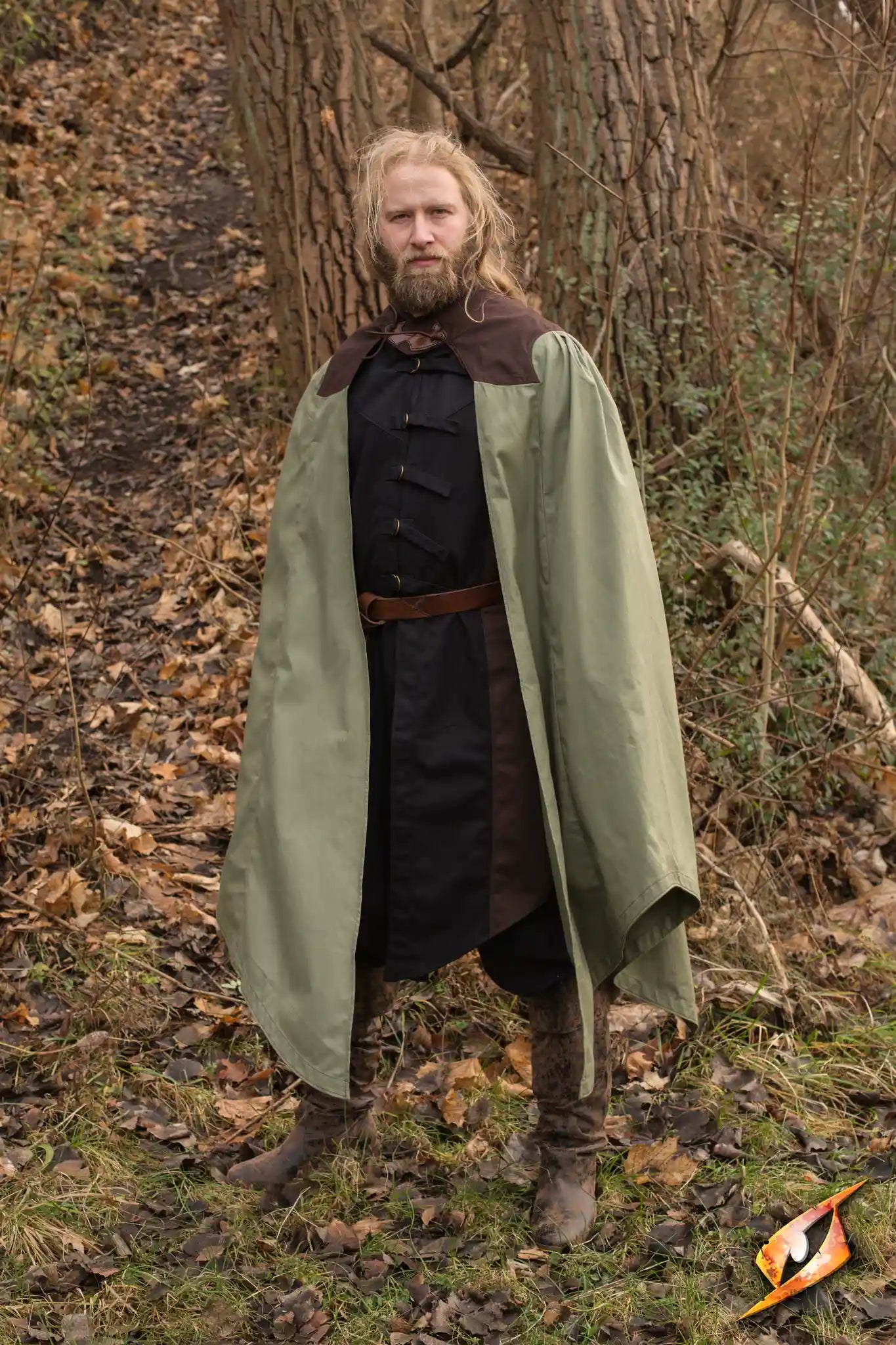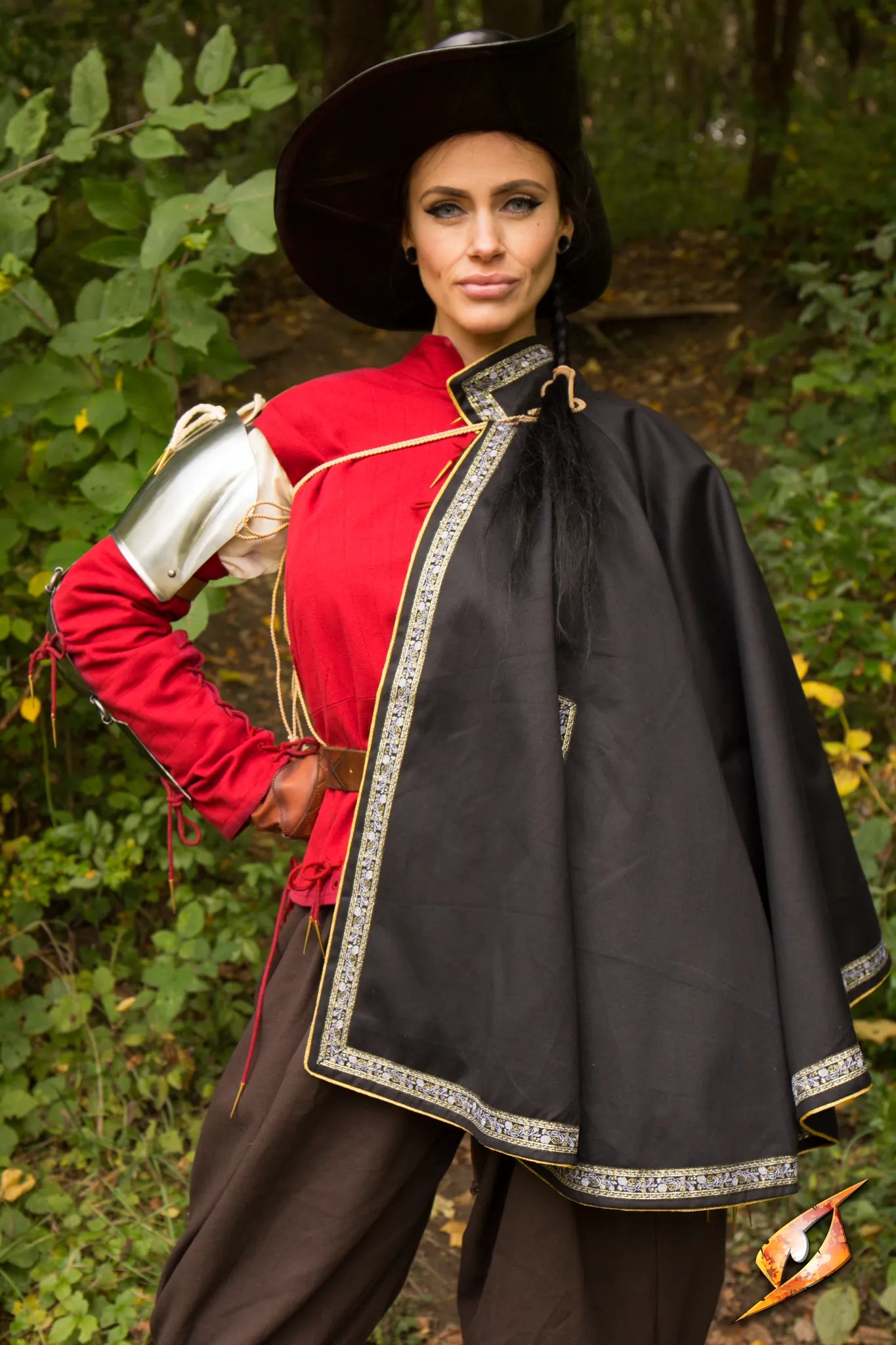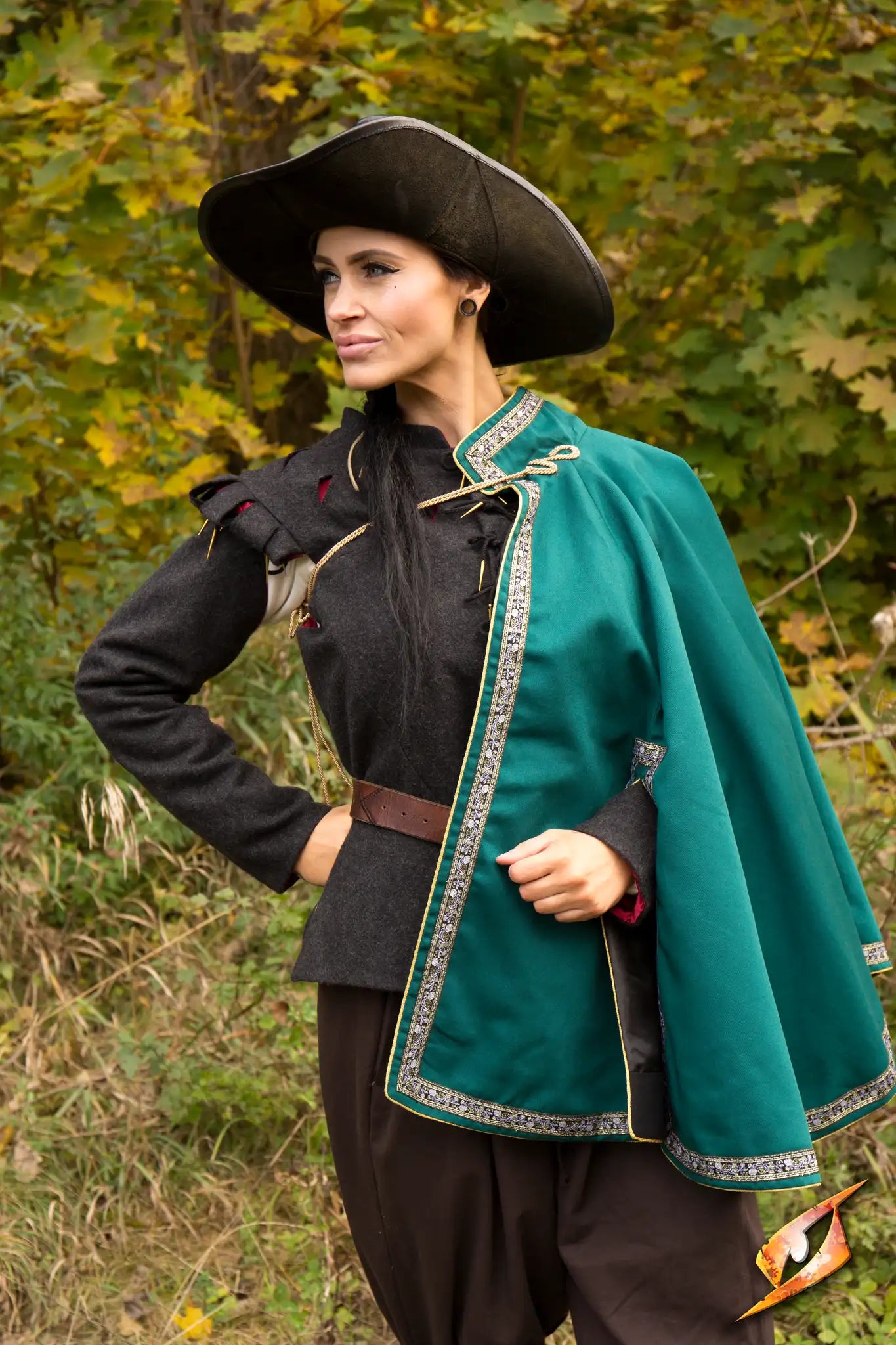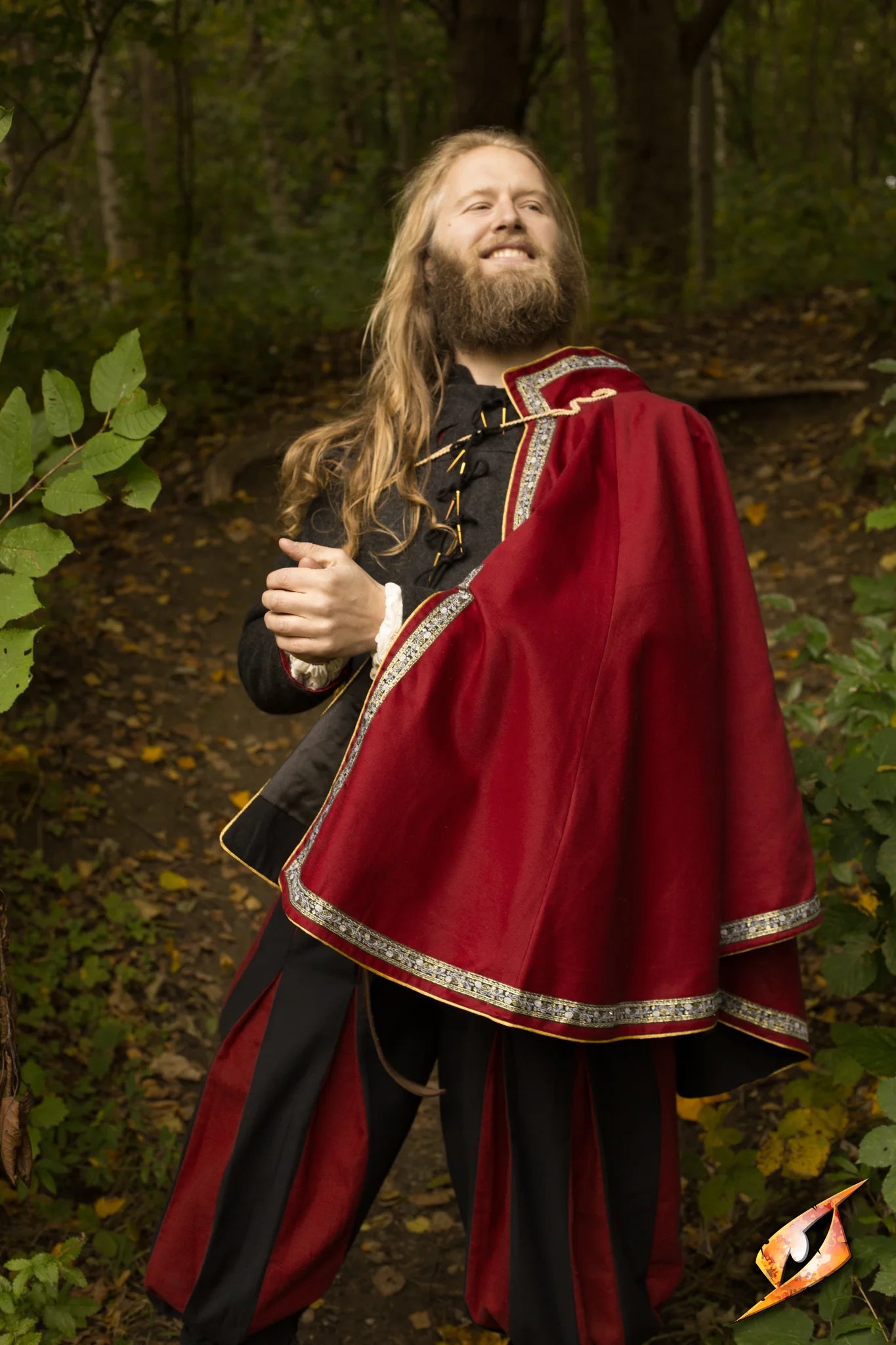Filters
Recently viewed products
Medieval Clothing
What Counts as Medieval Clothing?
When people say medieval clothing, they’re talking about the clothes worn in Europe between the 5th and 15th centuries. That’s a full thousand years. A lot changed in that time, but one thing stayed true: clothes said who you were.
If you were a farmer or a labourer, your tunic and trousers had to last through real work. Wool and linen were your friends. If you were rich, your clothing wasn’t just about staying warm — it was about being seen. Silks, velvets, fancy dyes, trims. Even the cut of a sleeve or the type of hat on your head could tell people exactly where you stood in the social order.
The church and the crown both had a say in how people dressed. Some laws restricted what colours or fabrics certain classes could wear. Fashion also shifted dramatically across the centuries. Early medieval clothing was simple: tunics, cloaks, shifts. By the 14th and 15th centuries, you saw fitted doublets, gowns shaped by layers, and elaborate headwear that told the world you had money.
So when you put together a kit today, you’re not just picking what looks good — you’re tapping into a long tradition where clothes were both practical and symbolic.
Building an Outfit the Easy Way
Think of your clothing in layers. That’s the easiest way to get it right.
Start with something simple and breathable. A tunic or shirt, plus pants or chausses. That’s your base. Comfortable enough to wear all day, and it already gives you the silhouette people expect when they hear “medieval.”
Then add a middle layer. A gambeson gives padding if you’re wearing armour. A vest adds shape. A tabard with heraldry or colours tells people at a glance what faction you belong to. These are the pieces that start turning “costume” into “character.”
Over that comes outerwear. A cloak is classic, and also practical when the wind picks up or rain starts falling. Robes and coats give you warmth and presence. It’s the layer that makes you look finished, and it’s the one you’ll be glad to have when the weather turns.
Finally, don’t skip the accessories. A belt makes your outfit useful. Boots will save your feet after hours on uneven ground. A hood, hat, or veil changes how people see you before you even say a word. Gloves, corsets, skirts, dresses — they all polish the look. The little things matter more than you think.
Fabrics That Actually Work at Events
Wool is still king for warmth. It’s insulating, it breathes, and it handles damp better than most fabrics. Wear it at night or in spring and autumn, and you’ll be glad you did.
Linen and cotton are your summer friends. Light, breathable, easy to wash after a long day of sweat and dust. Great for crowded halls or hot festivals.
Velvet, embroidery, and trims? They’re about making a statement. They won’t keep you warmer, but they’ll make sure people notice you in a court scene or on stage.
Comfort and Fit Tips No One Tells You
Make sure you can sit. Really — try it before you leave home. Can you sit on a bench without tugging seams? Can you crouch without feeling like you’ll split something? That’s the test.
If you’re wearing a gambeson, size up on the outer layers. Otherwise you’ll be stuck wrestling with your own clothes all day.
And care matters. Air wool out after each use. Wash linen and cotton gently. Hang cloaks so they keep their shape. These little habits make your kit last years instead of seasons.
How Clothing Changed Over the Centuries
-
Early medieval (5th–10th c.): Men wore long tunics over braies; women wore kirtles over linen shifts. Cuts were simple, dyes were natural.
-
High medieval (11th–13th c.): Clothing got brighter and better tailored. Men wore cotehardies with hose, women wore bliauts. Accessories like belts and gloves became status markers.
-
Late medieval (14th–15th c.): Fashion leaned tighter and richer. Men wore doublets with joined hose. Women wore fitted gowns with structured layers. Velvet, embroidery, and wild headwear shouted wealth.
Even if you’re not sticking to history, these shifts are fun inspiration for shaping your kit.
What to Look For When You Buy
Here’s the stuff that makes clothing worth it in LARP, cosplay, or fairs:
-
Breathable base layers you can actually wear all day.
-
Logical layering so you can add or shed warmth.
-
Outerwear that handles weather while keeping you in character.
-
Accessories that make the difference between “dressed up” and “believable.”
-
Sturdy seams and closures that survive real events, not just photos.
Buying Tips From the Field
Start small. A base layer, a mid-layer, and an outer layer will get you through most events. You can always add later.
Think about the weather. Wool or blends for cold and wet, linen or cotton for heat.
Always try the “sit test” before you commit to a piece.
Add a belt early — it’s one of the easiest ways to add both practicality and immersion.
And pack a small repair kit. A torn seam or broken tie is easy to fix if you’re ready for it.
Why Epic Armoury Medieval Clothing?
Because we design gear for people who actually wear it in the mud, under stage lights, and at sweaty summer fairs. Cuts are practical, fabrics are chosen for real conditions, and sizes are made for actual bodies.
Pieces are built to mix and match across eras, so you don’t need a new wardrobe every time you change character. Buy one kit, then expand it as your story or role evolves.
Build Your Kit
Start with a tunic or shirt, add pants or chausses. Layer with a gambeson, vest, or tabard. Throw on a cloak, coat, or robe. Then finish with belts, boots, headwear, gloves, corsets, skirts, or dresses.
Pick what works for your role, match it to the climate, and you’ll look and feel the part.


